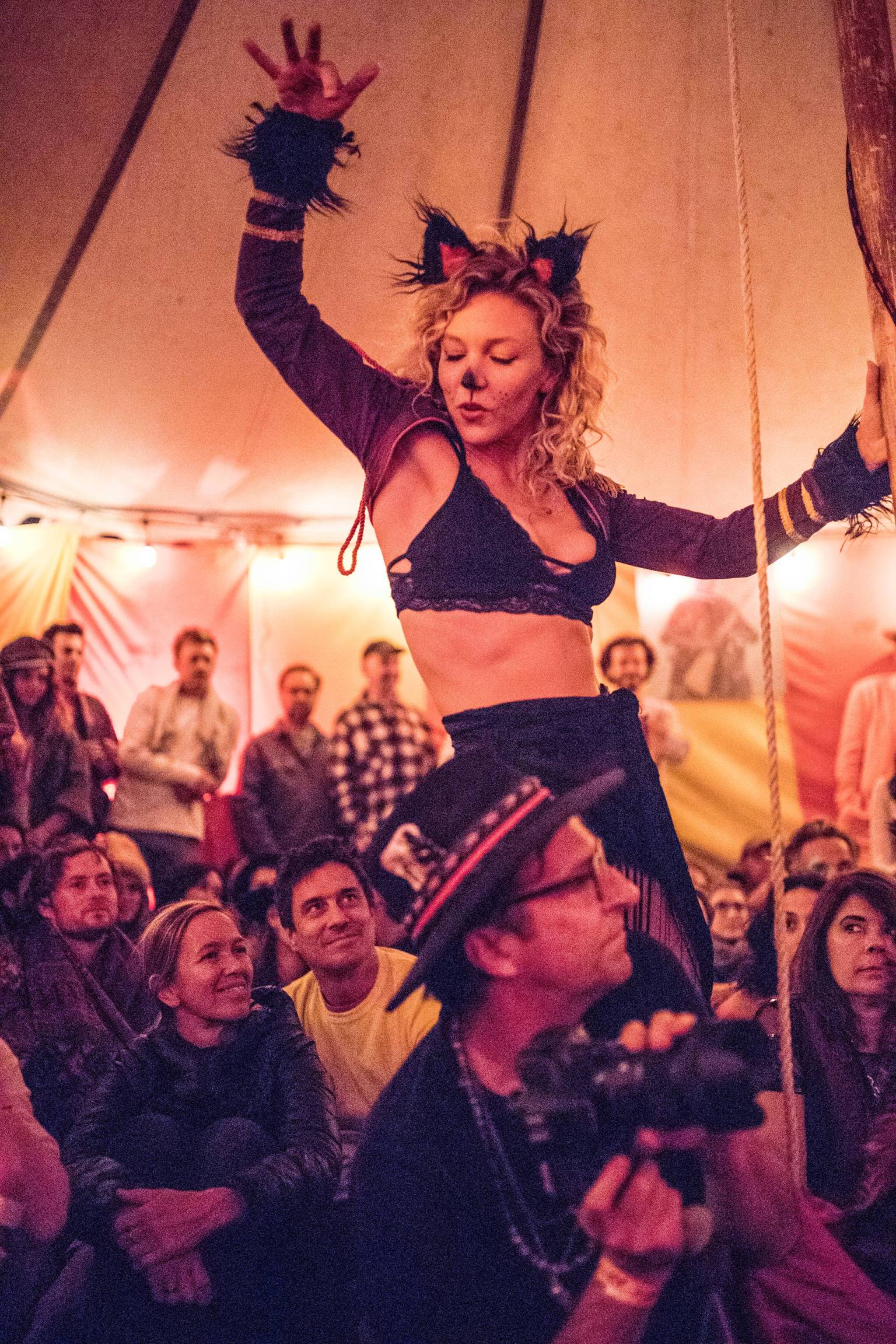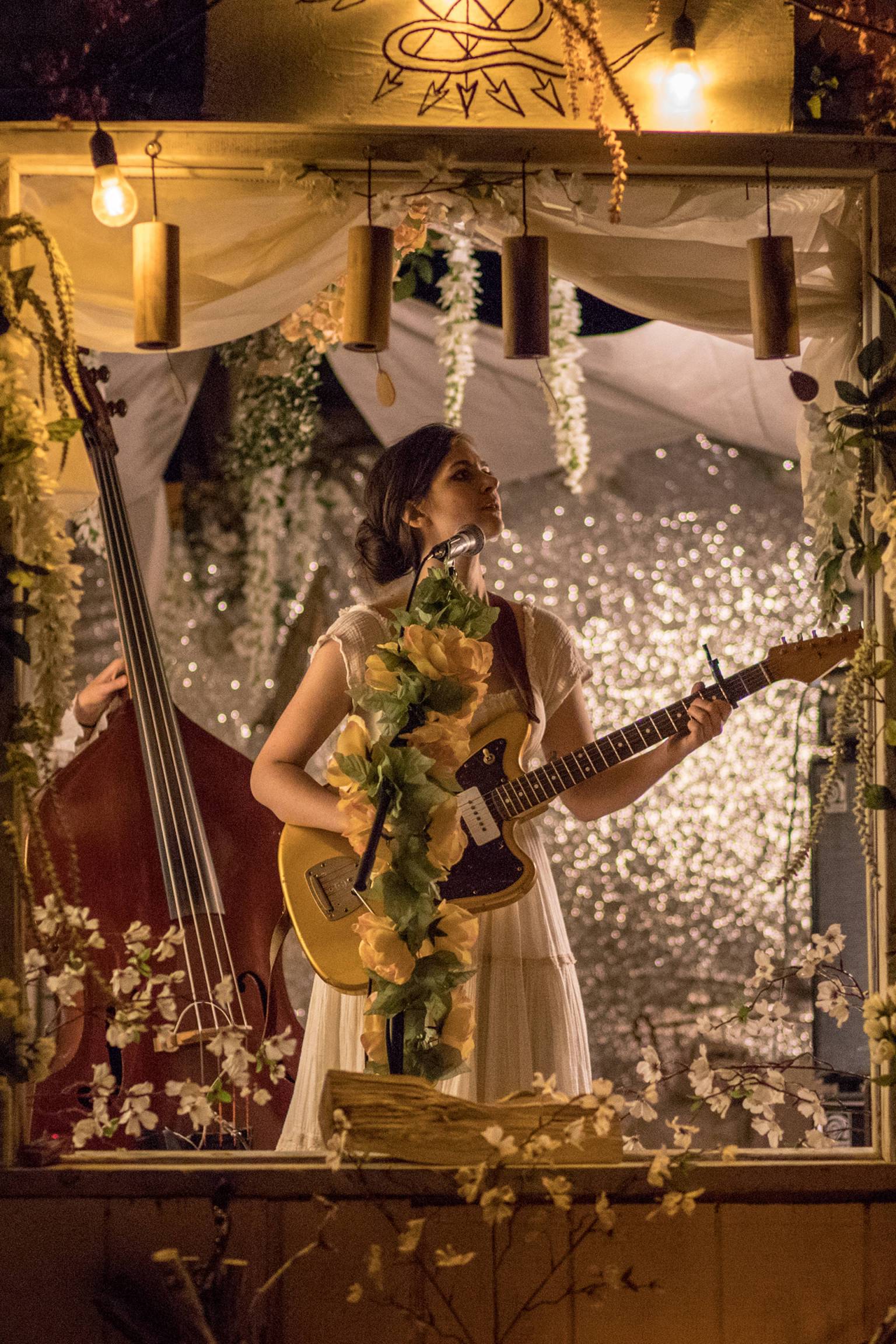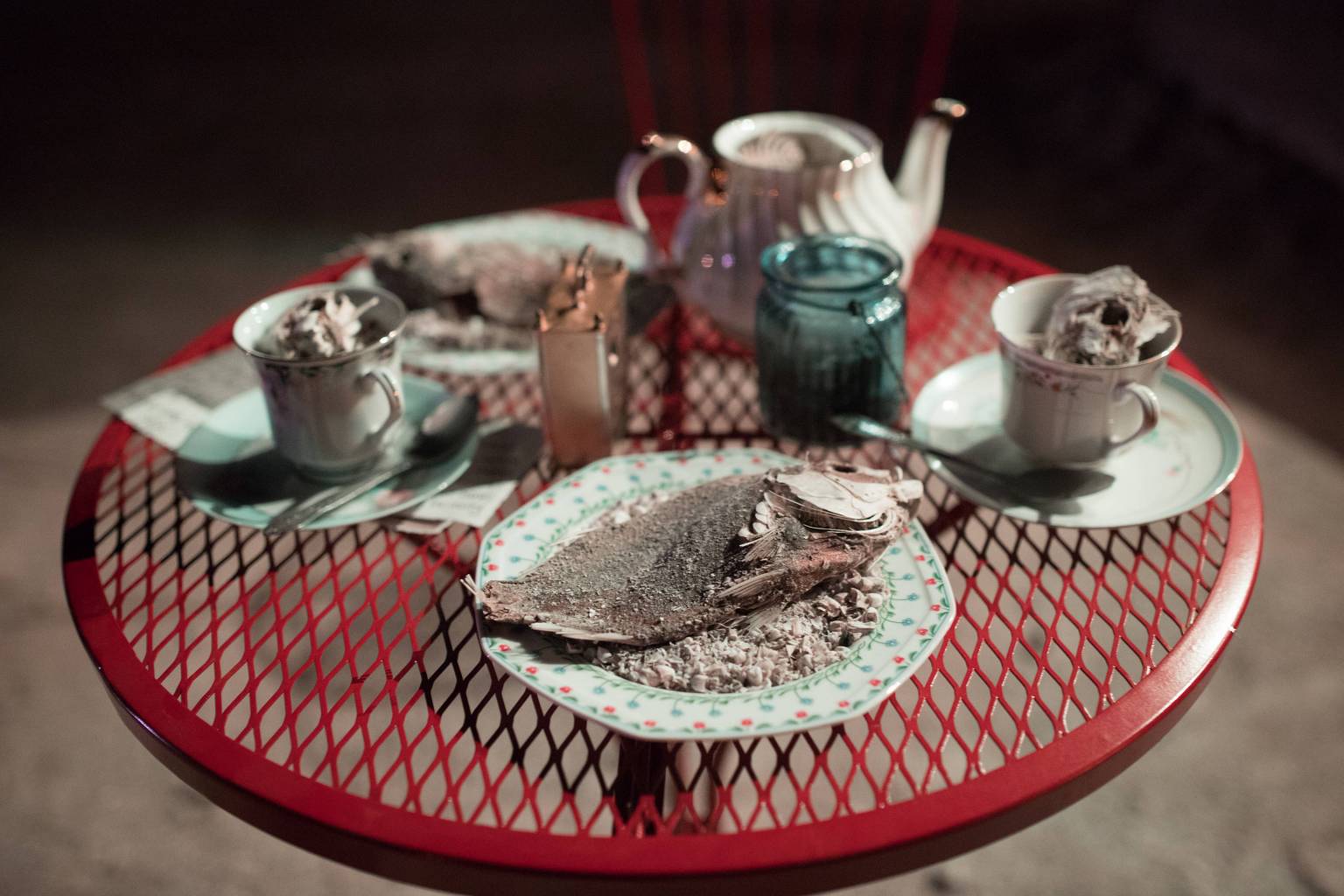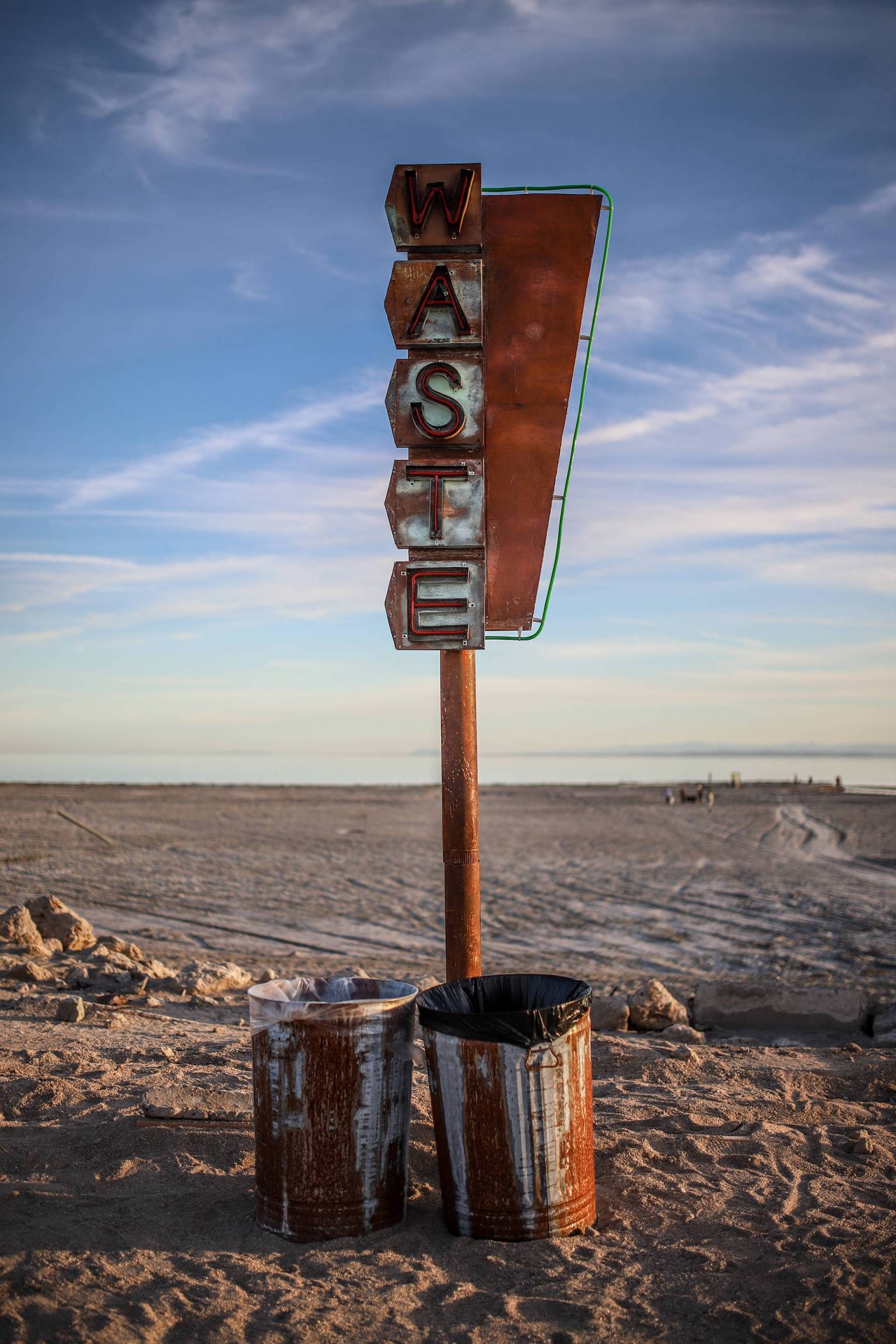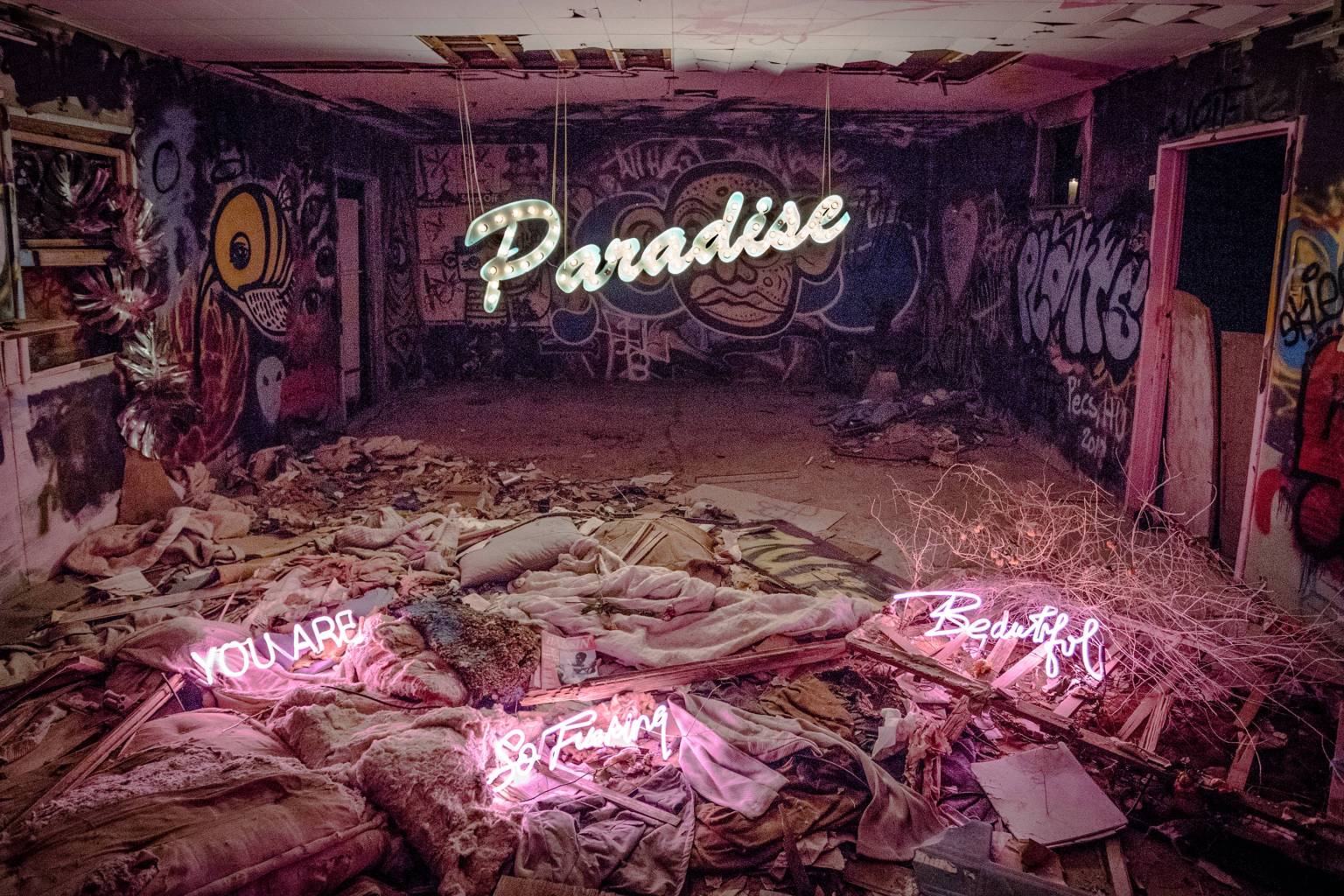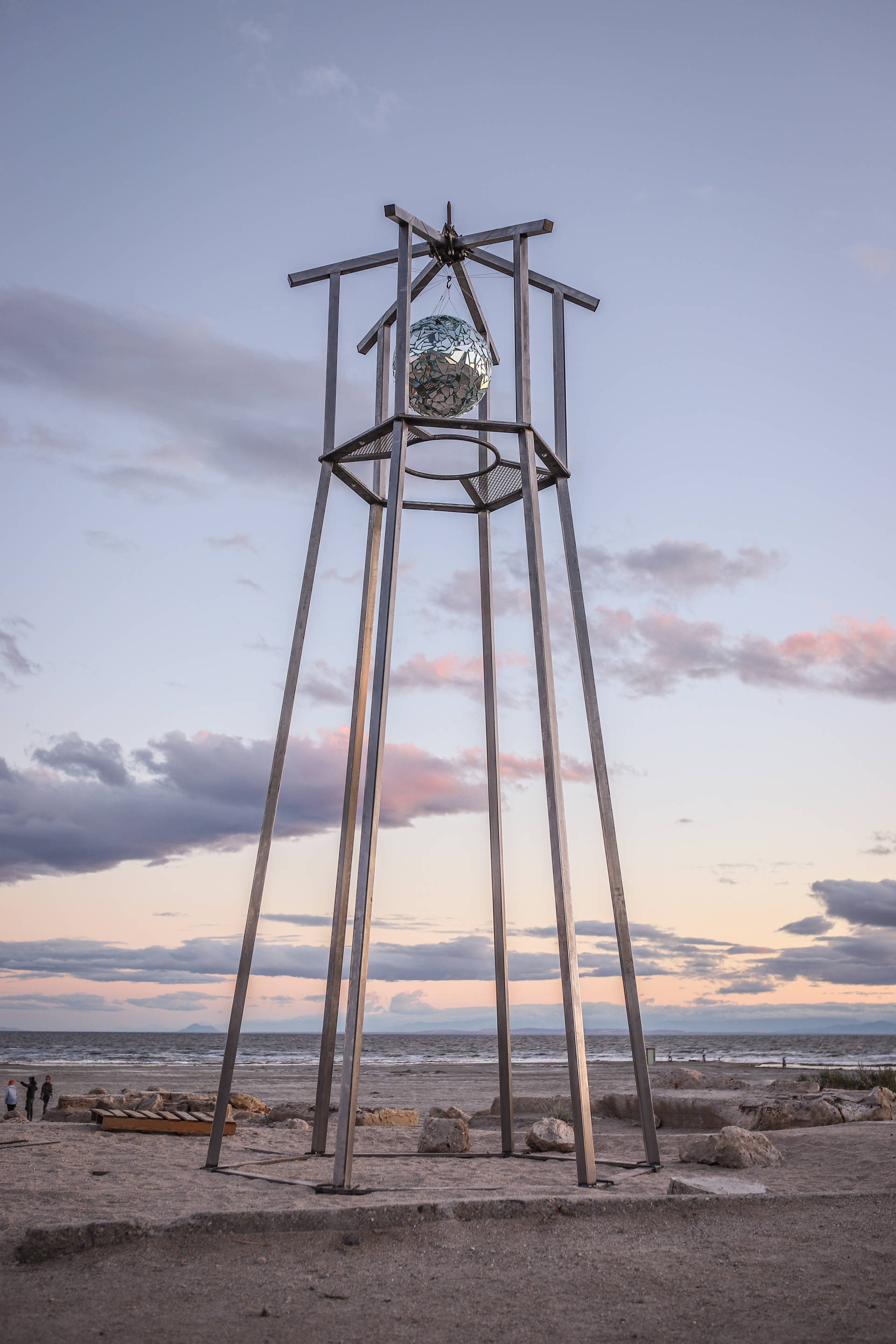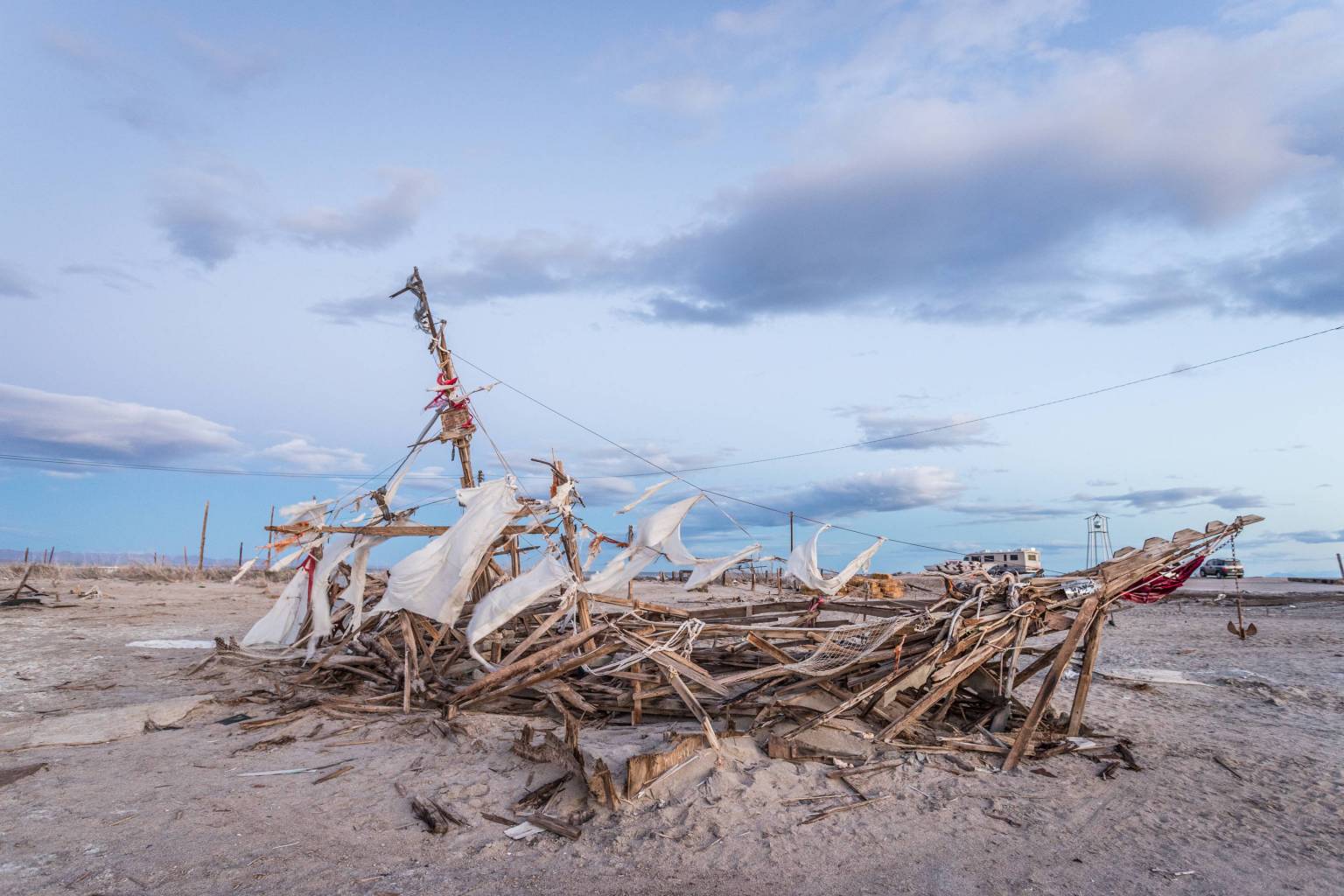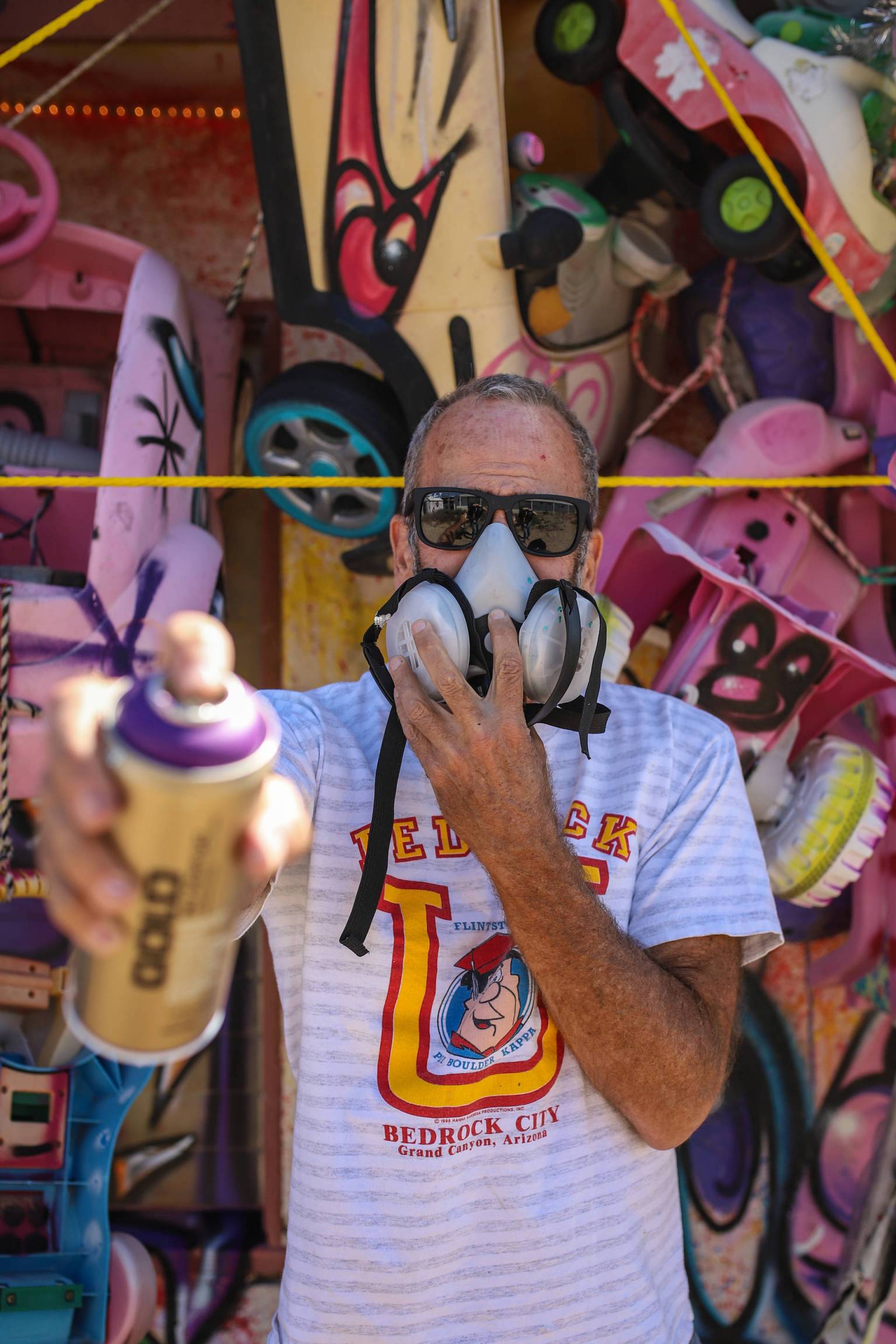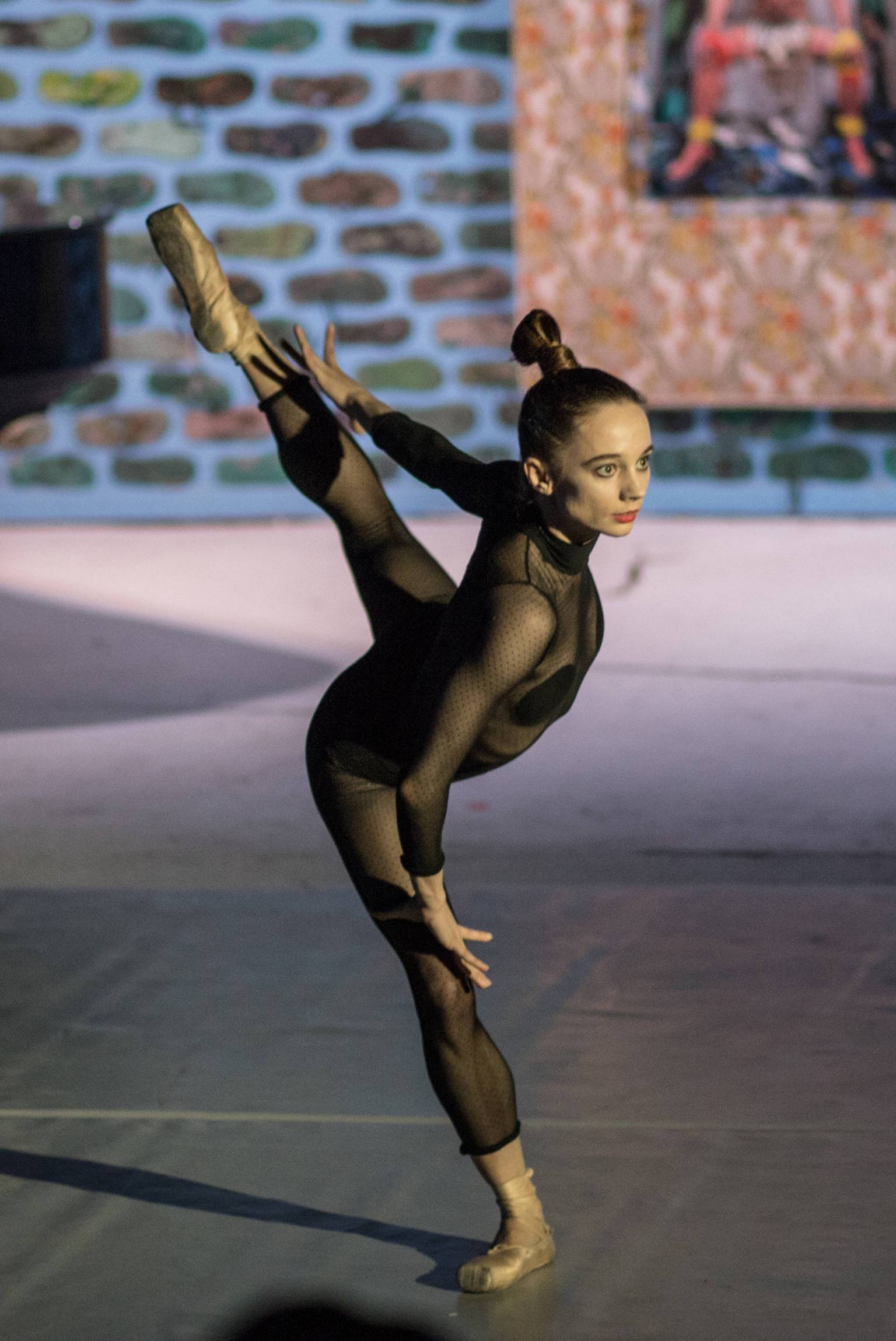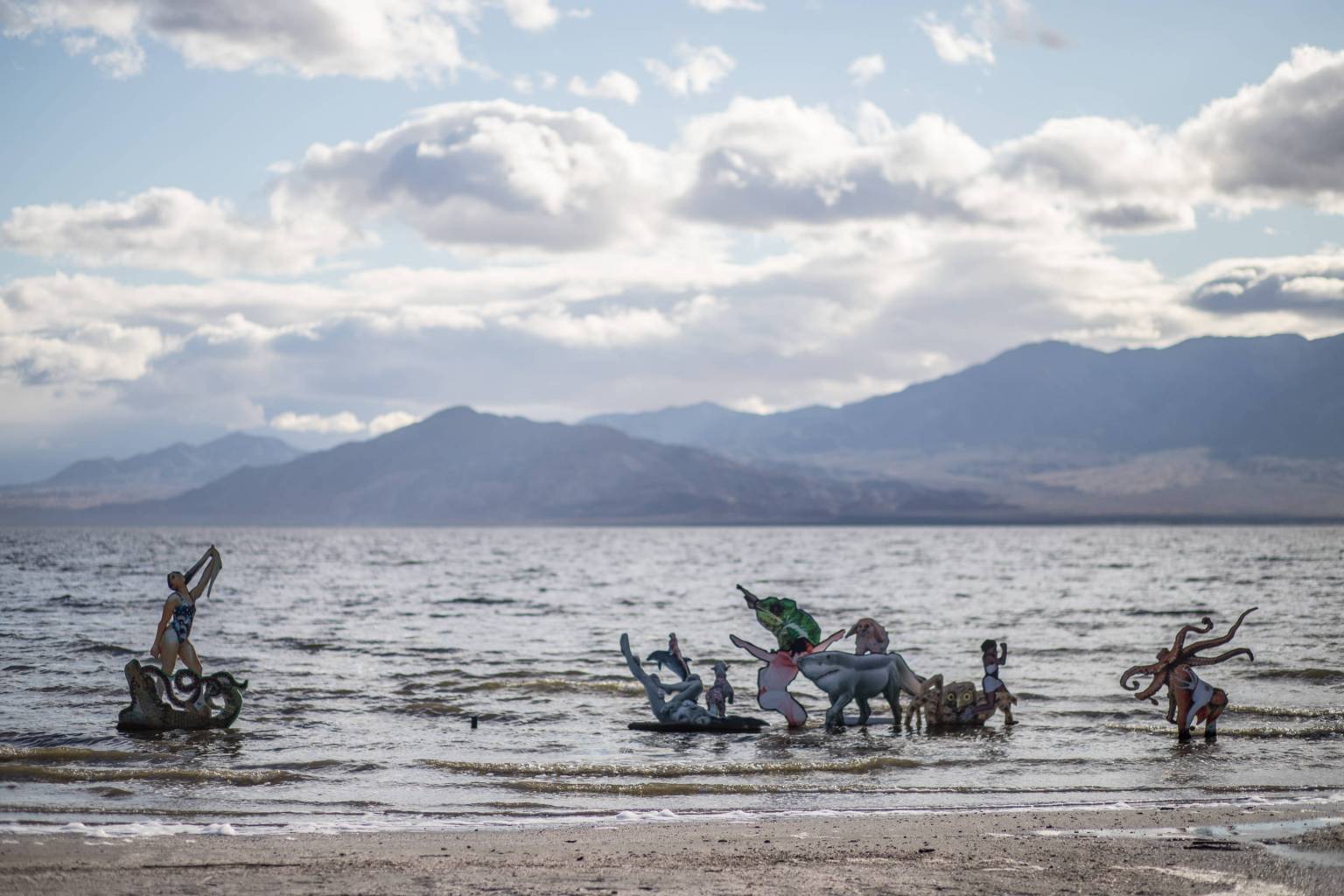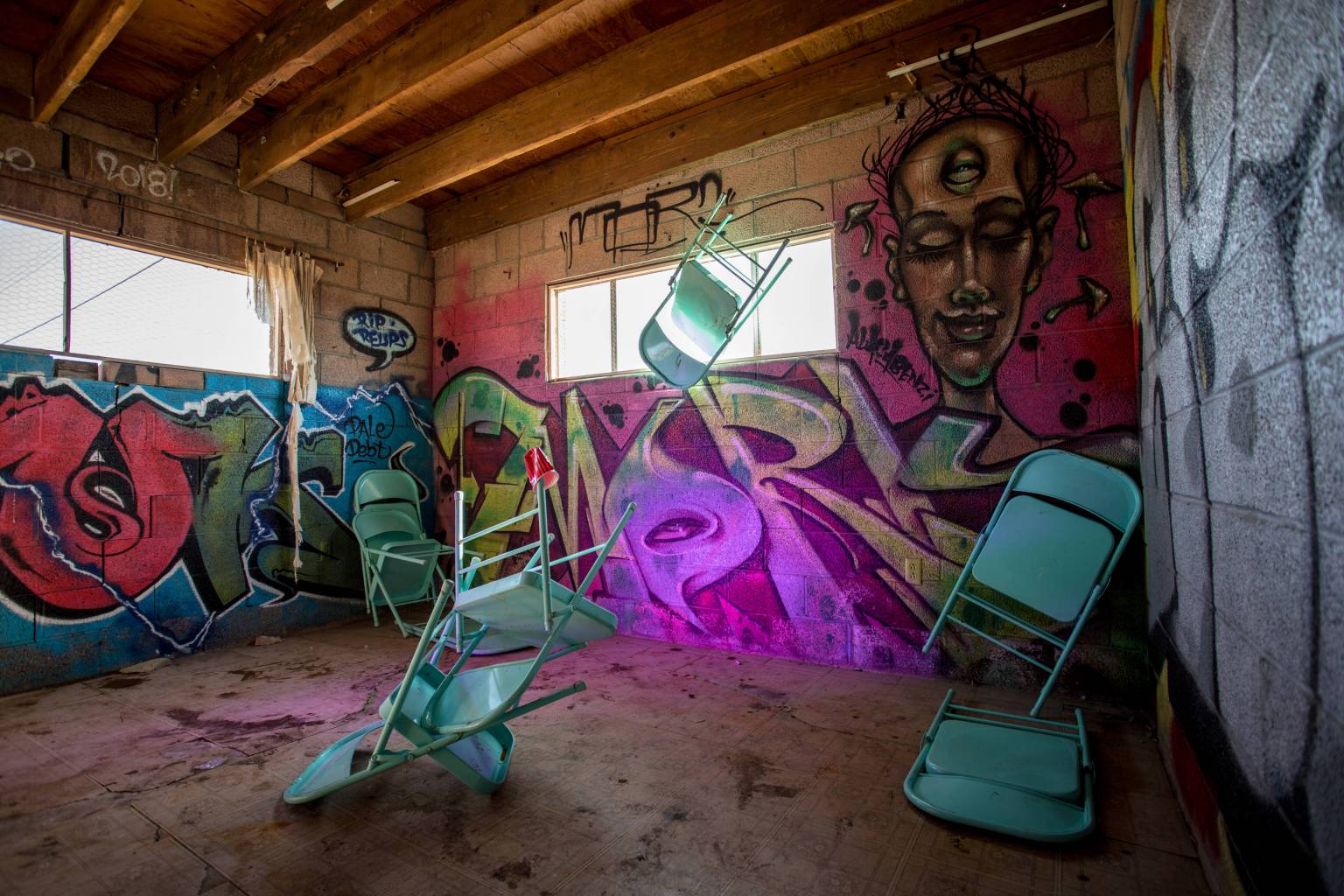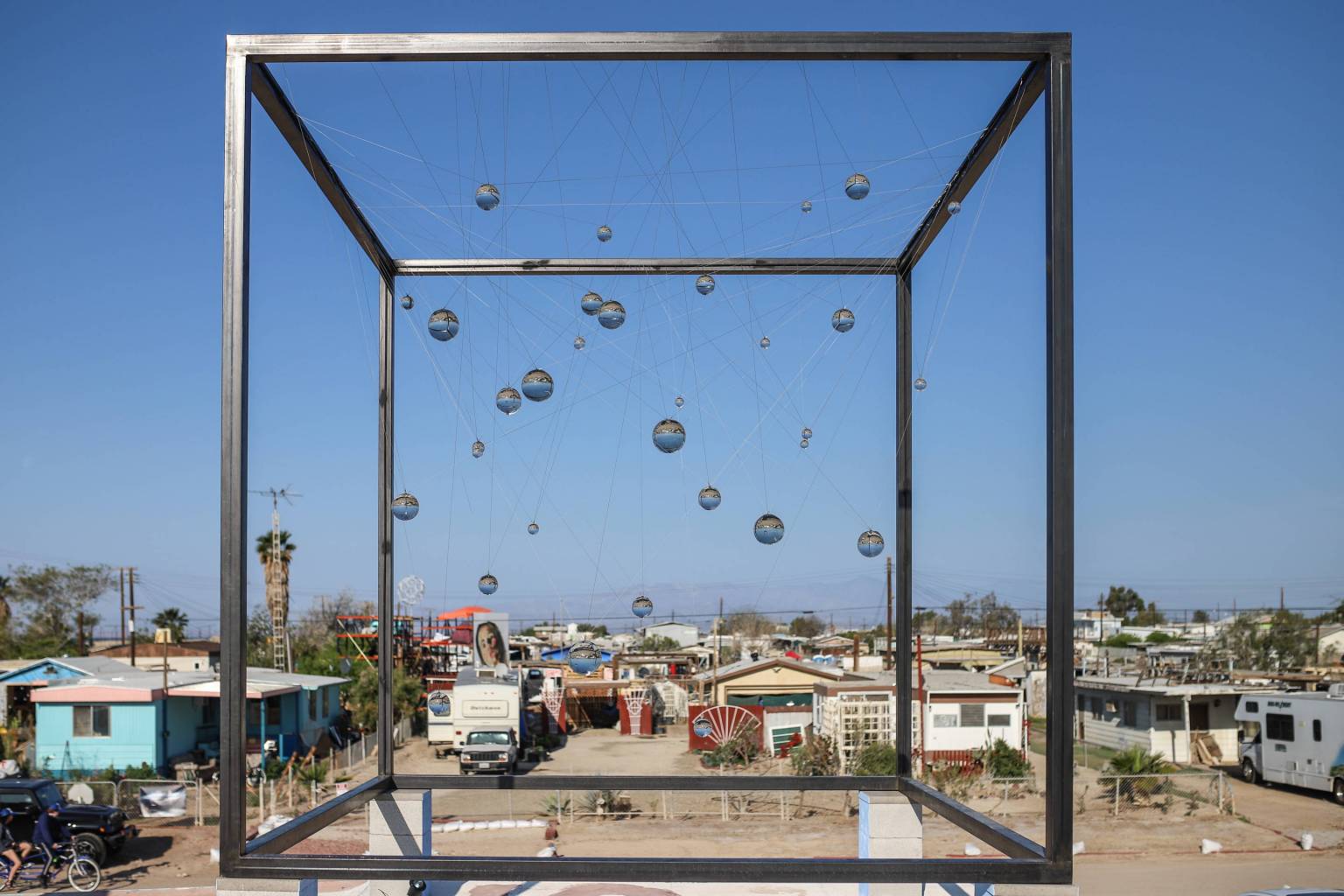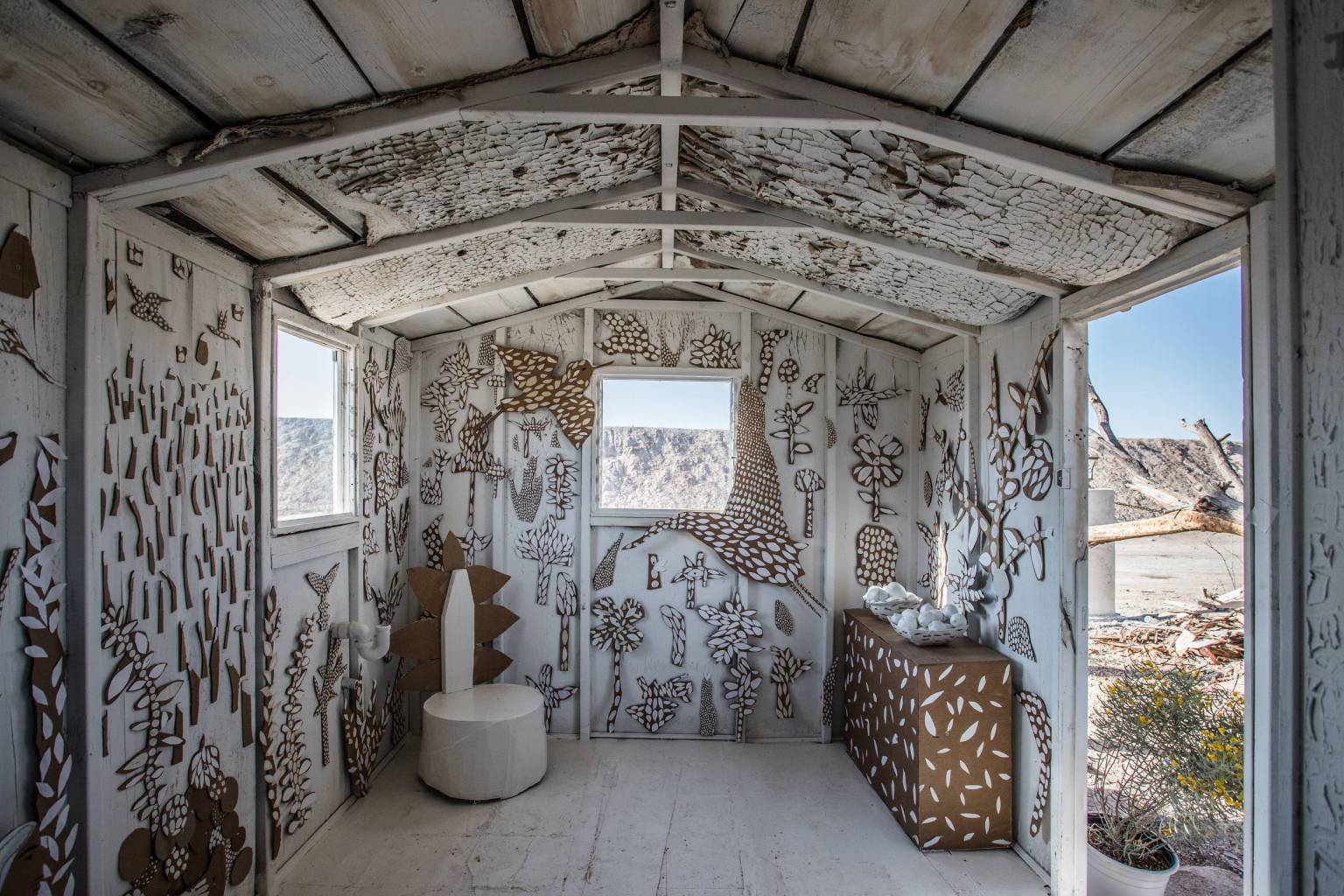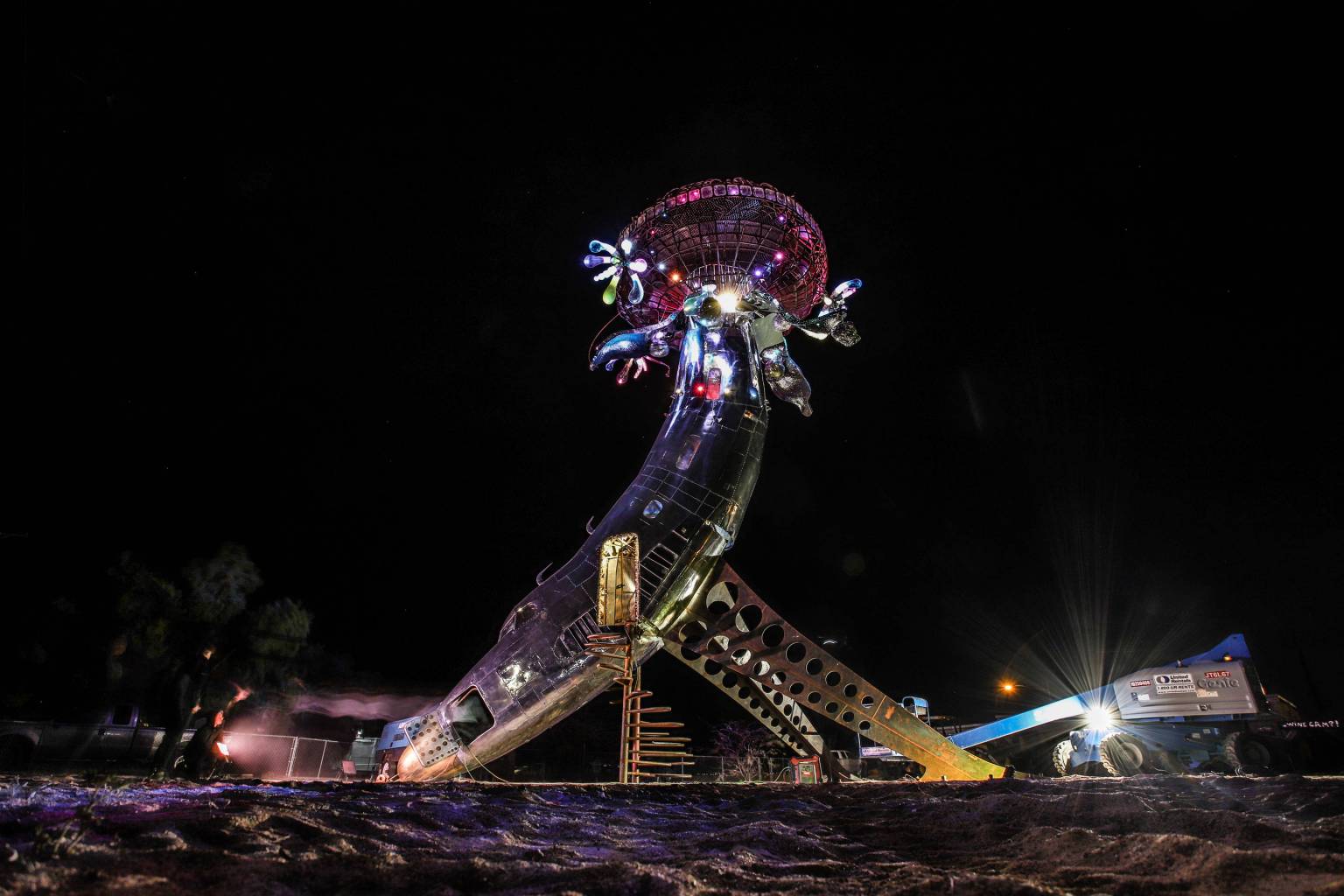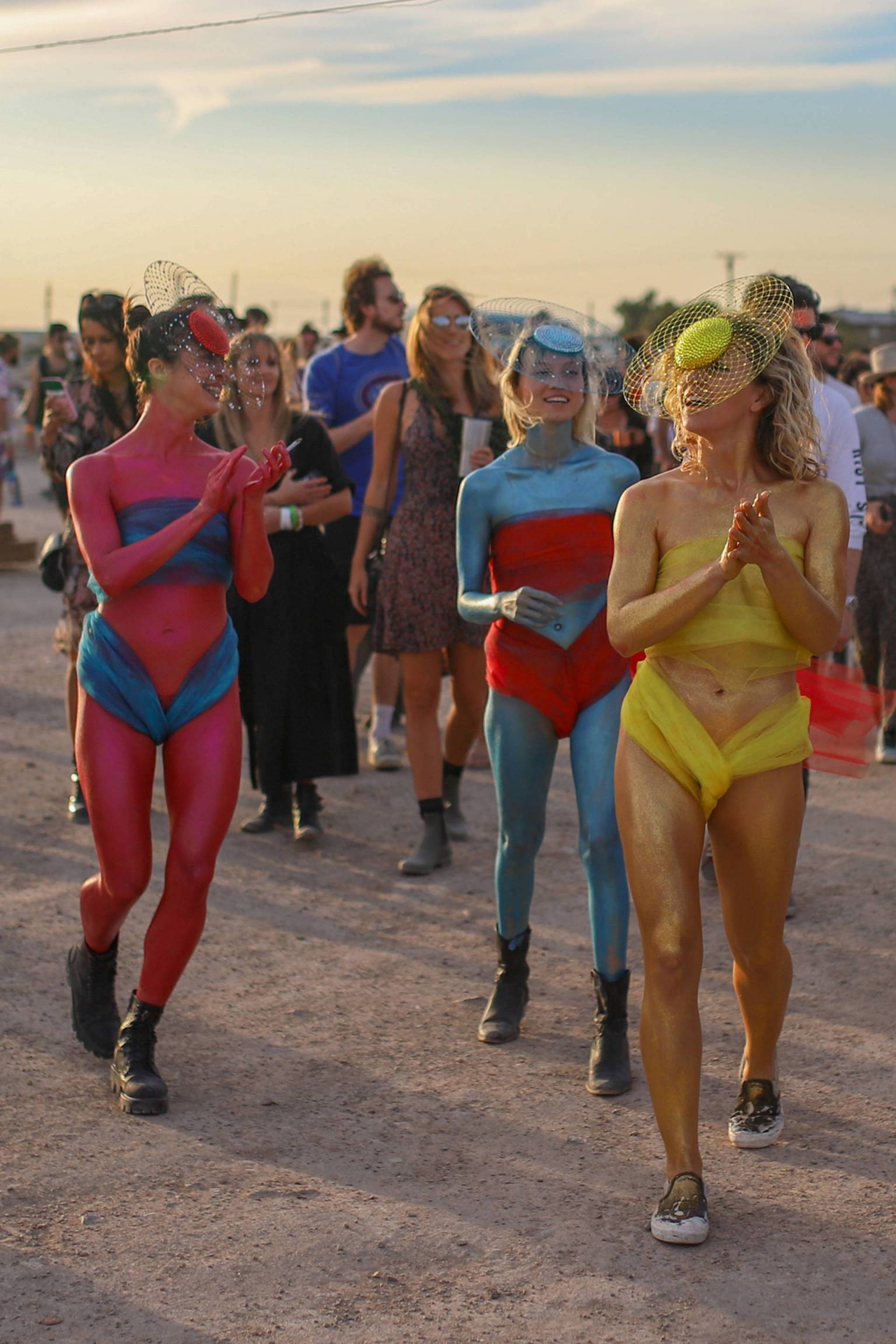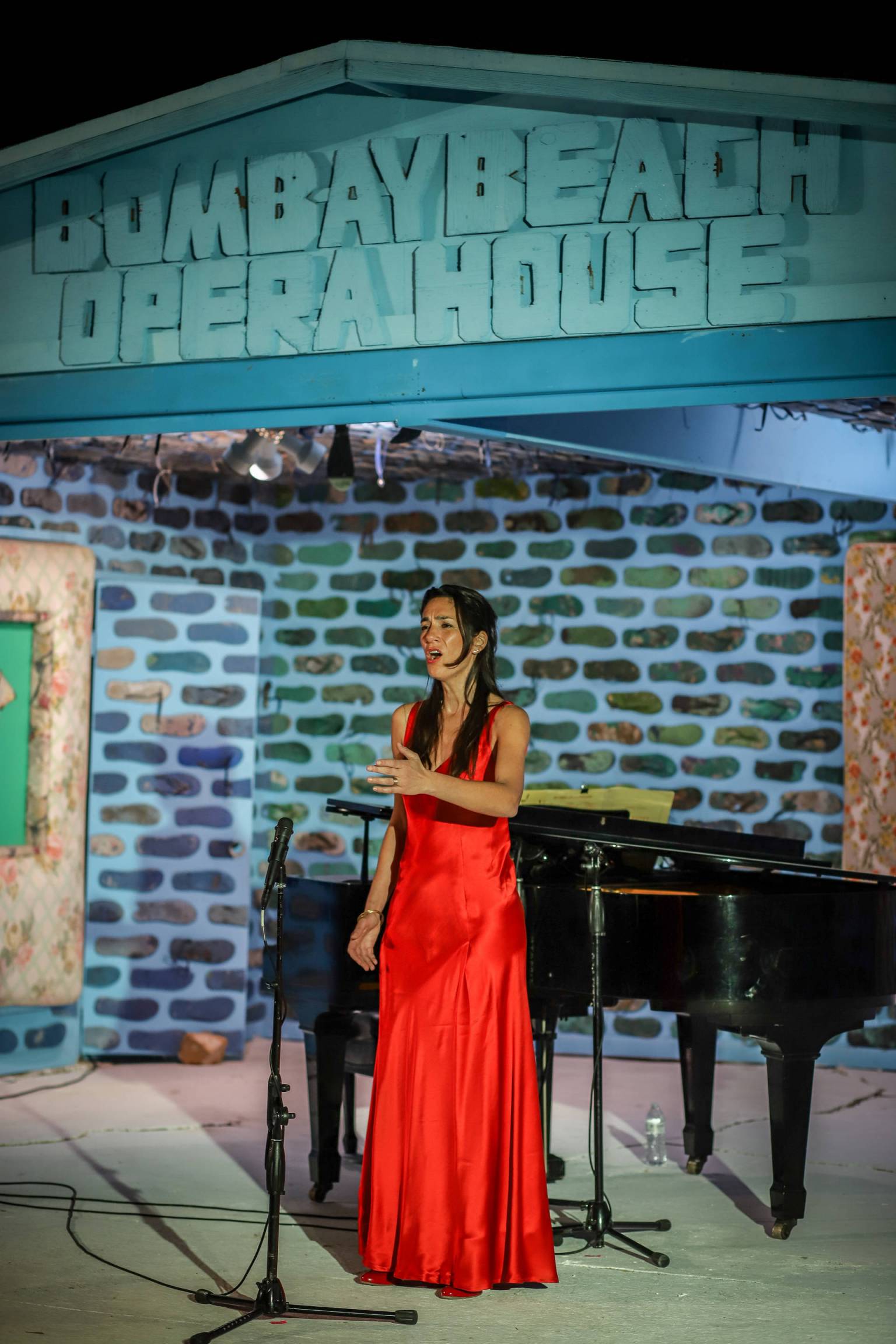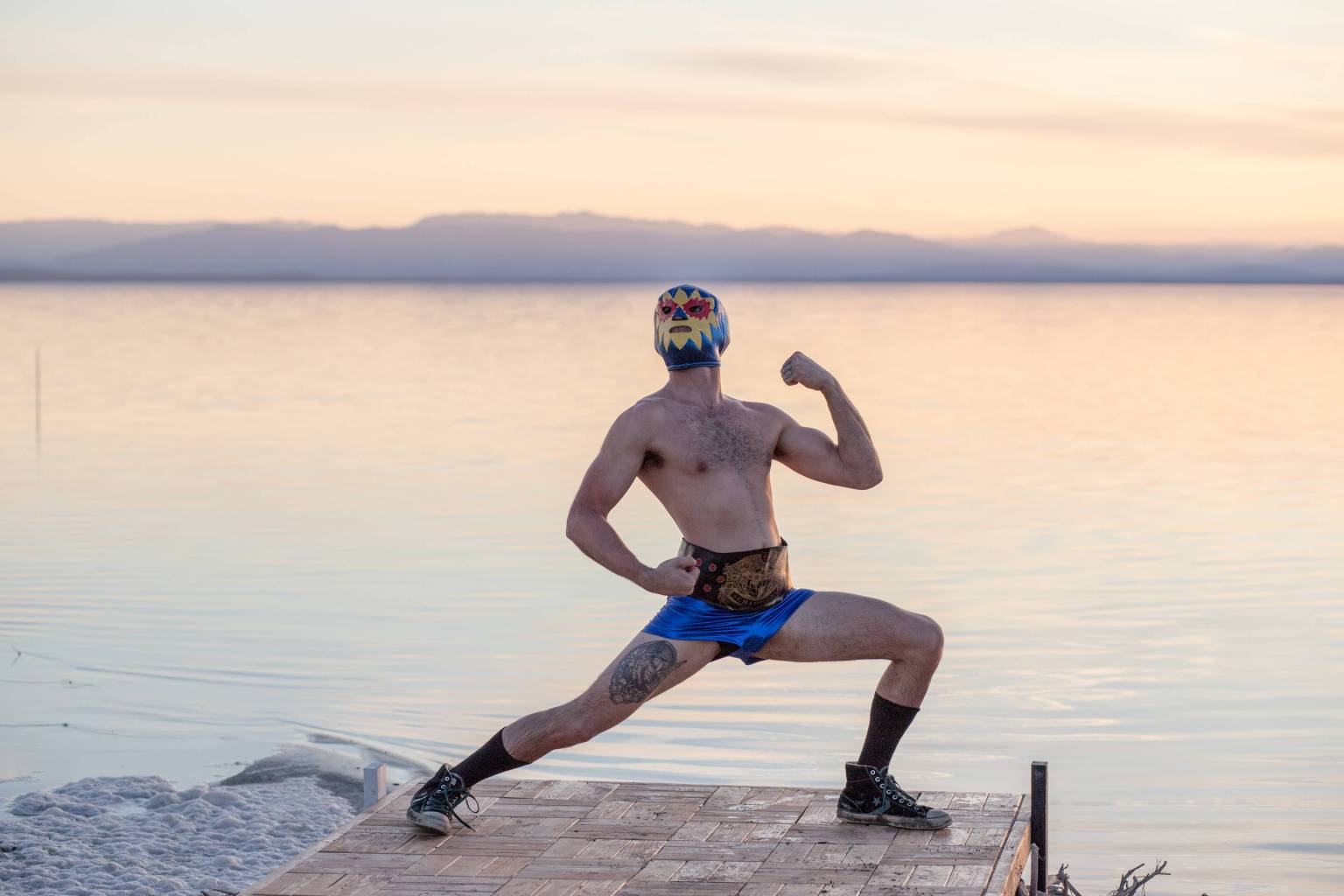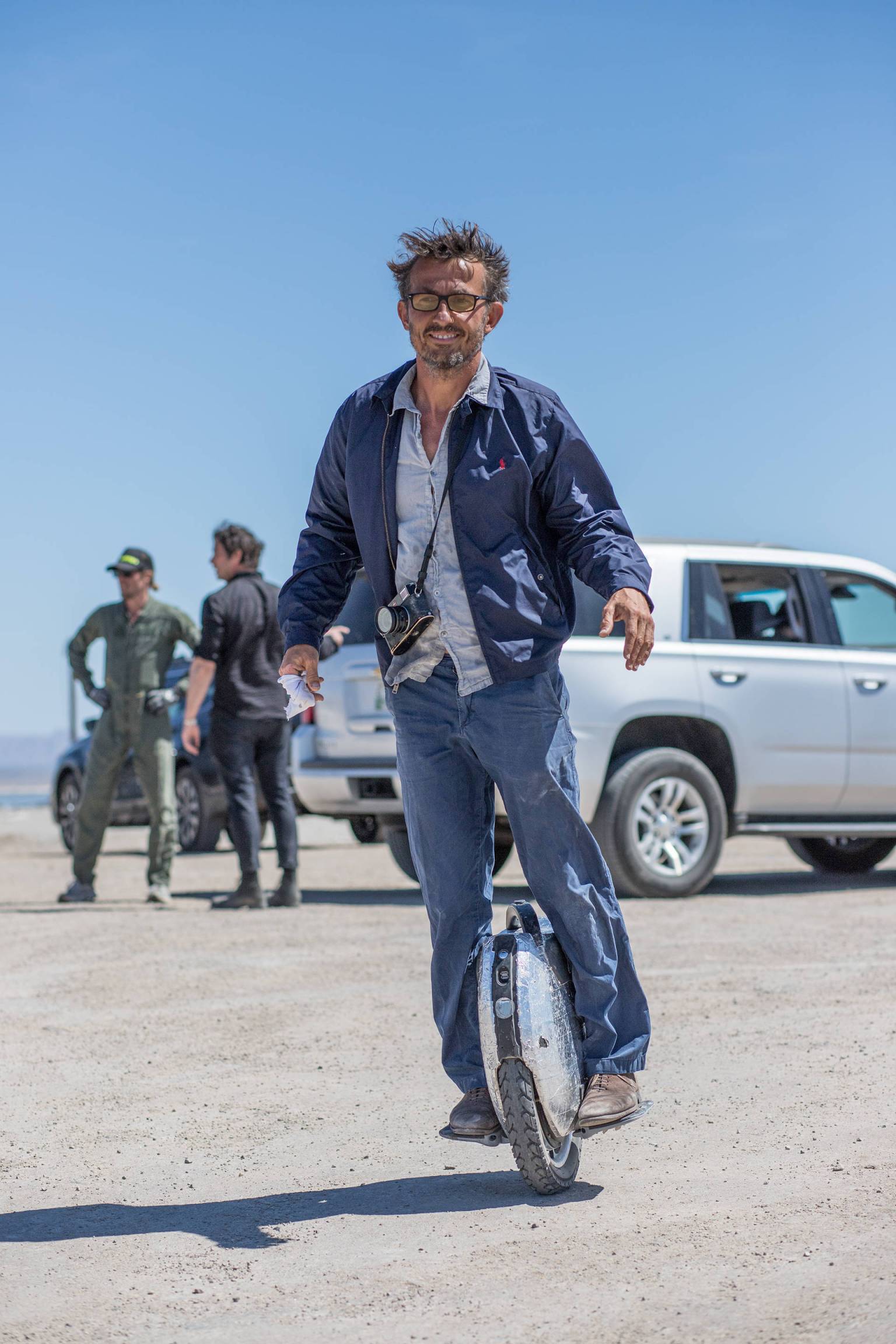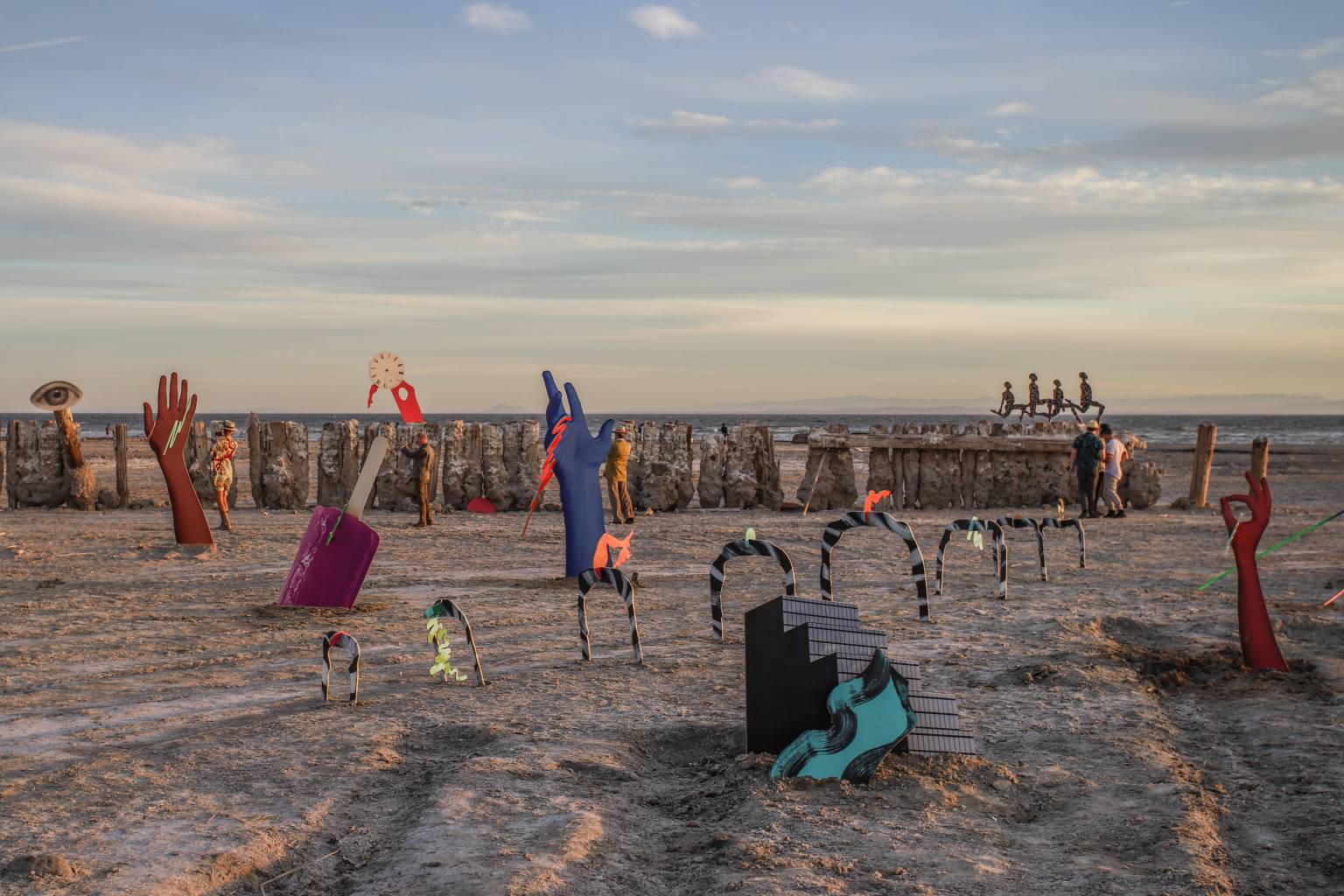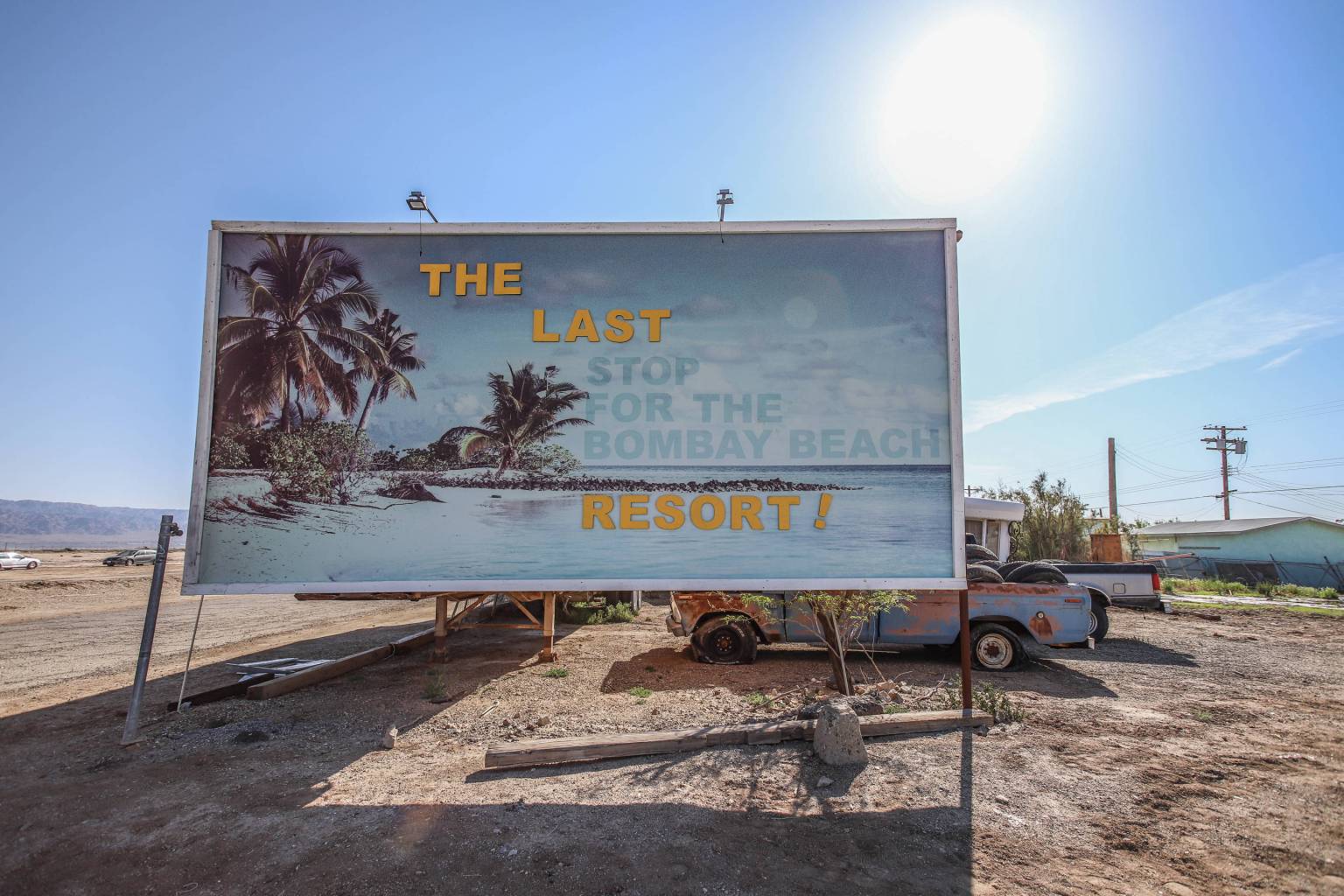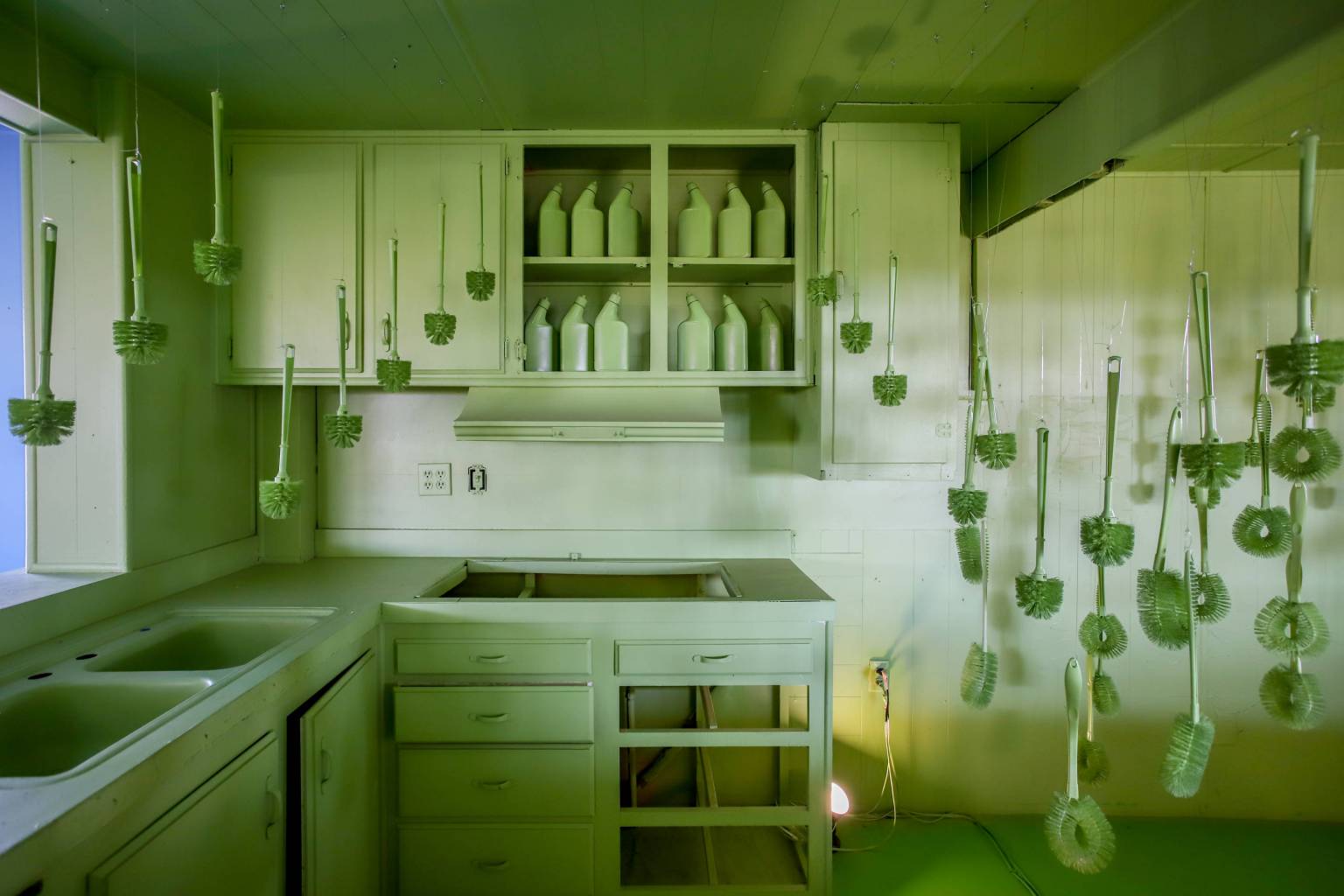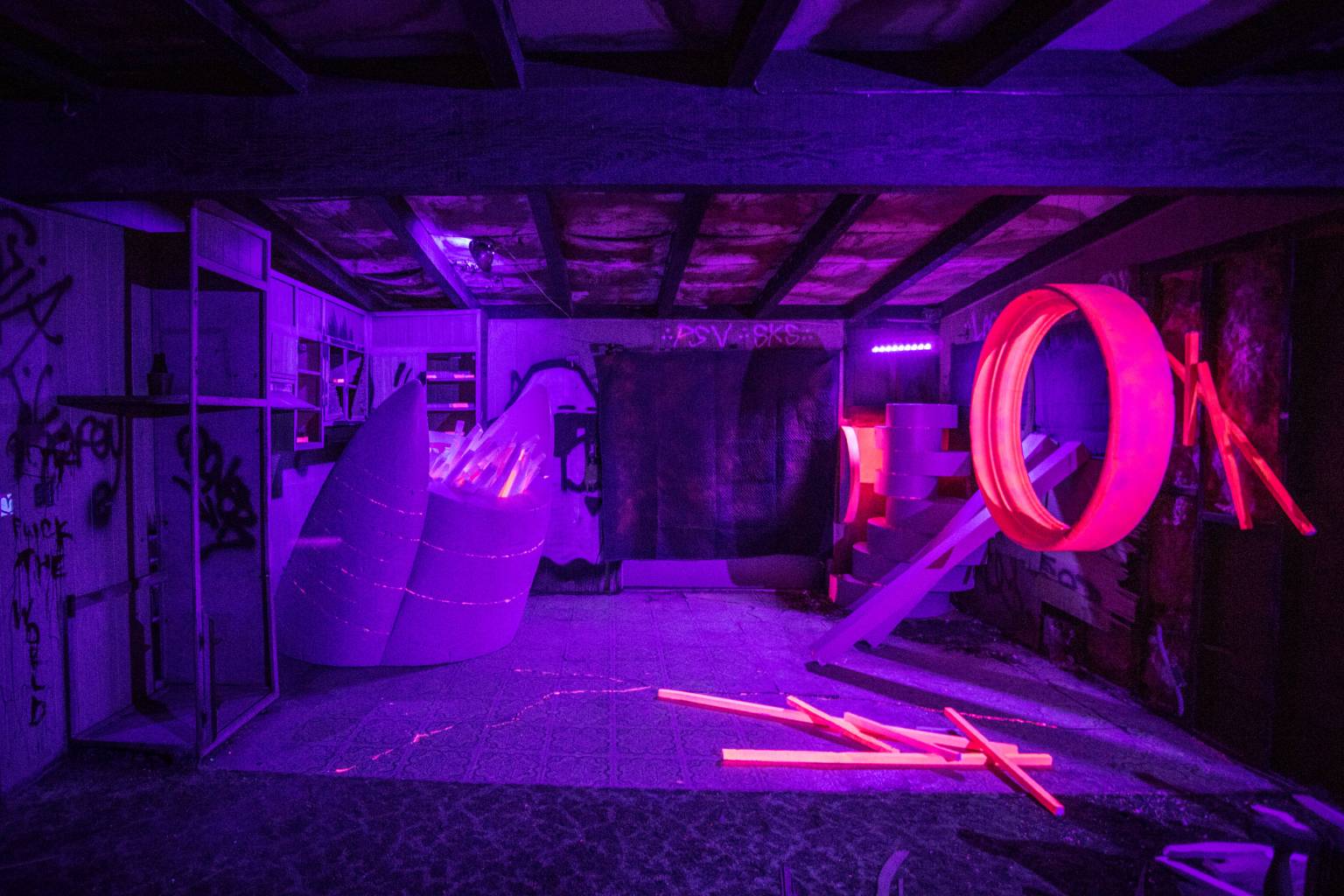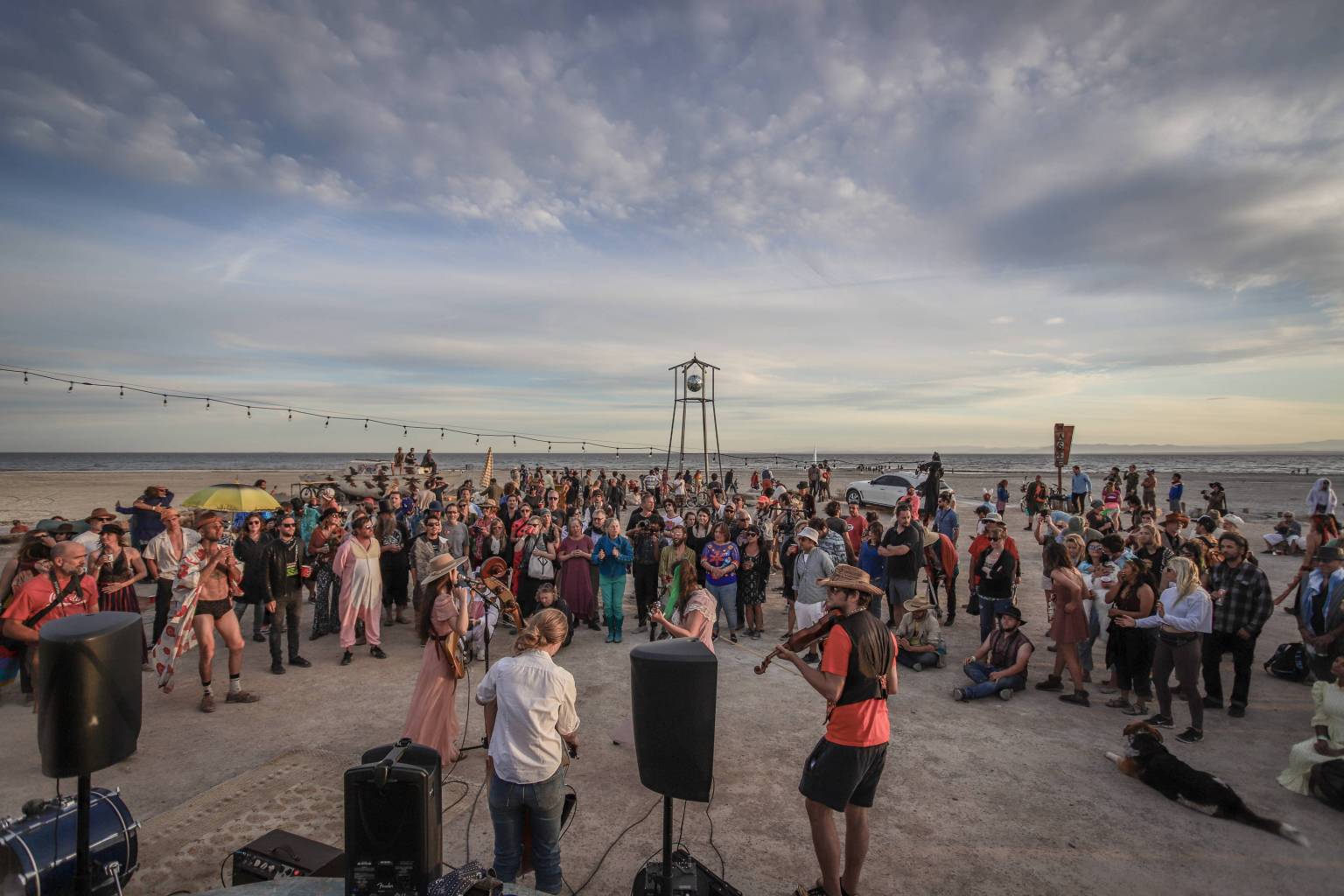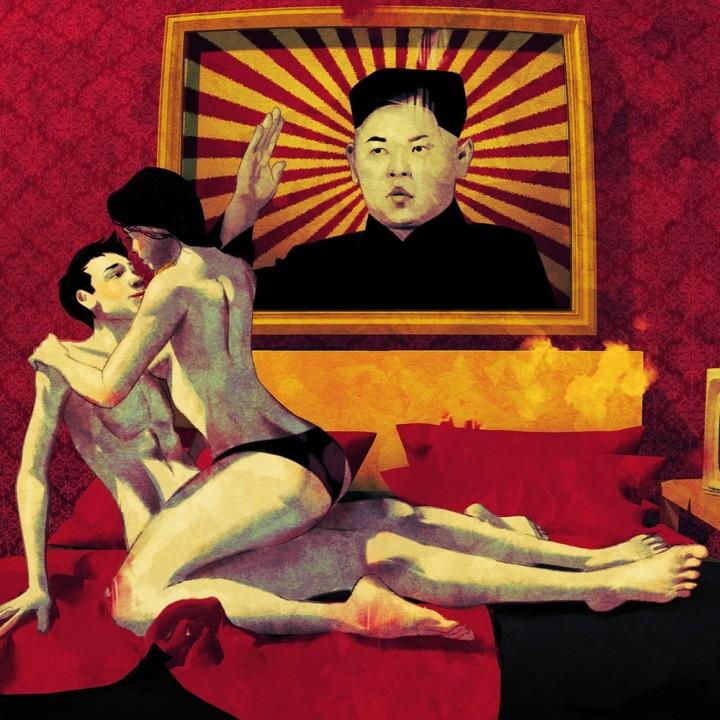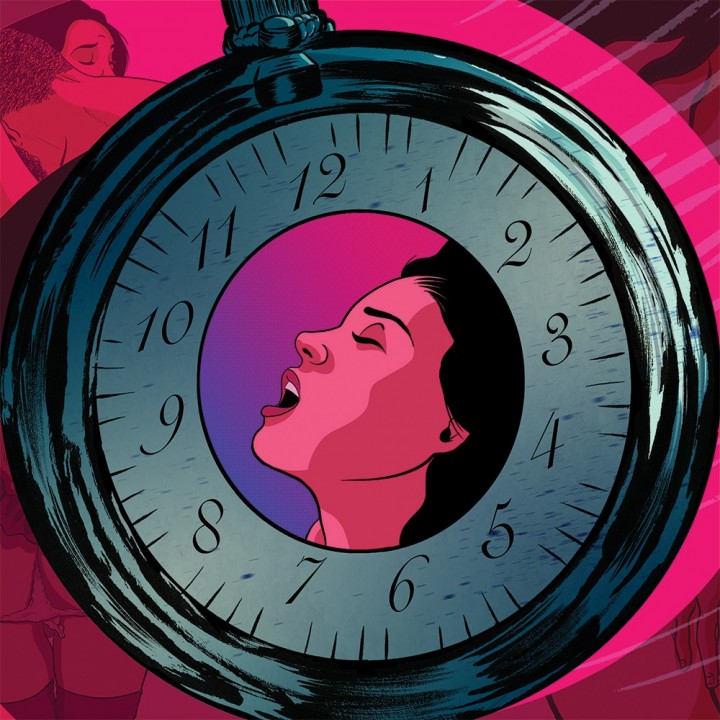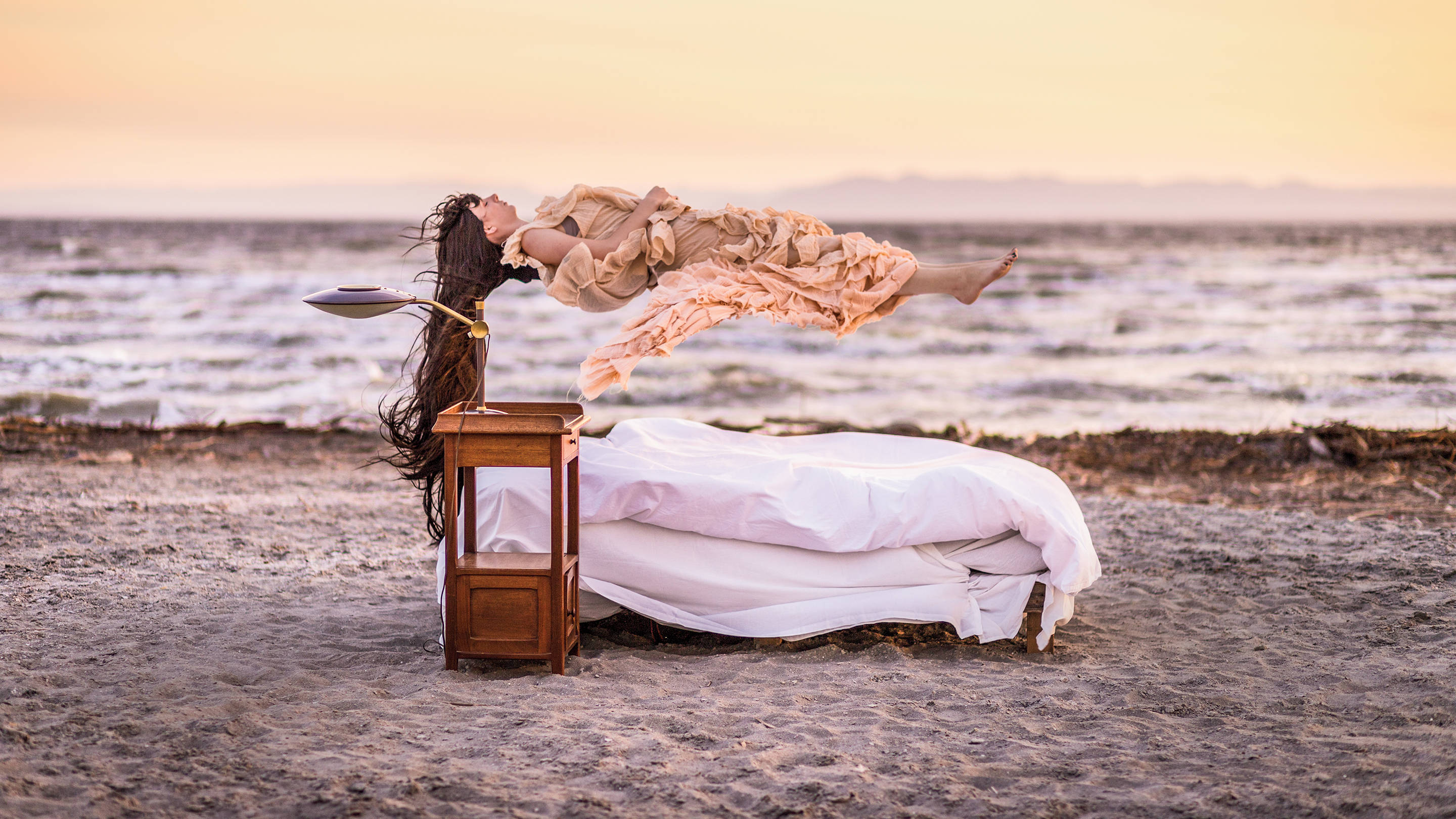
Wasteland Wonderland
How three renegade curators are building an ethereal world of weirdness in the California desert
As the sun sweeps its western arc over the Salton Sea, toward the distant desert mountains, a prism appears on the cottony clouds, a rainbow rabbit hole in the sky. Just by looking up, we all drop in.
I can hear the crunch of what look like shells as he stomps toward the water, but as I follow him, I notice that the streaks of white set against the chocolate sand aren’t shells at all; they’re bones. The water smells of decay, but the luchador struts into the dead shallows anyway, pulls himself onto the swing and flexes toward his partner who snaps away from the beach, and though he’s probably doing it for the gram, it’s for us too.
We are participants and spectators at the 2019 Bombay Beach Biennale, an underground art party that some call the new (or anti) Burning Man. (Despite the name, it has been held annually since 2016, this year over a weekend in late March.) In the next 40 hours I, along with roughly 500 invited guests, will stroll through an atheist church, watch a sleeping woman levitate four feet above her bed and see a world-class prima ballerina, flown in from Berlin, dance at a trailer-park opera house. I will glimpse half-naked hipsters smeared with vibrant colors frolic in the cold desert wind, and eavesdrop on middle-aged locals with the sunken faces of chemical dependency. I will be approached by a penniless stranger desperate to borrow a toothbrush, and I’ll gawk at dinosaur bones and crystals nestled within the cracked shell of an old mobile home marinating in deep house music and starlight. Through it all I will wonder if art is enough to shift the fortunes of this small hobbled town—and if the locals believe the art-as-salvation promise in the first place.
When exhibited in a place where poverty and beauty, desecration and promise collide, art is elevated.
And yet it is here that three wealthy, well-connected friends have launched a radical experiment in art, culture and regeneration. In the process, they’re raising significant questions about a community on the precipice of change: Namely, is Bombay Beach becoming just another elitist playground or is something deeper happening in this forgotten desert town built on the cracked foundation of a mistake?
In 1905 the Imperial Canal, which brought Colorado River water to farms in the southern California desert, breached. By the time engineers completed their fix, in 1907, they’d accidentally created the largest lake in California. It was named the Salton Sea.
In 1944, B29 pilots training for Hiroshima dropped a 10,000-pound payload onto targets in the lake. Local legend has it that one dummy bomb landed onshore—hence the name.

It looks like this dark underbelly of the American dream
In 2007, Tao Ruspoli, a photographer and filmmaker with royal Roman bloodlines, opened a Kim Stringfellow photography book and saw pictures of the Salton Sea for the first time. Within days he was in Bombay Beach. “It looked like this dark underbelly of the American dream,” Ruspoli says. “I was married at the time, and I said to my wife, ‘We could buy a house in Bombay Beach for the price of a used Jetta.’” His wife (the actress Olivia Wilde, whom he’d married in 2003) didn’t bite, but when they divorced in 2011, his first move was to buy property in the area. He started spending weekends by the lake, and in 2015 he brought his old friend, Stefan Ashkenazy, to town.
Part carnival barker, part hospitality impresario, Ashkenazy owns the Petite Ermitage boutique hotel in West Hollywood. In 2015 he had plans to host a pop-up hotel experience in Joshua Tree, but when he arrived in Bombay Beach, he torched those plans on the spot—despite the smell, the dead fish, the flies and all the other things he’d been warned about. “The idea transformed from communing with nature to commiserating with it,” Ashkenazy says. He and Ruspoli seized on the idea of bringing high-caliber art, ballet and even opera to a town in tatters.
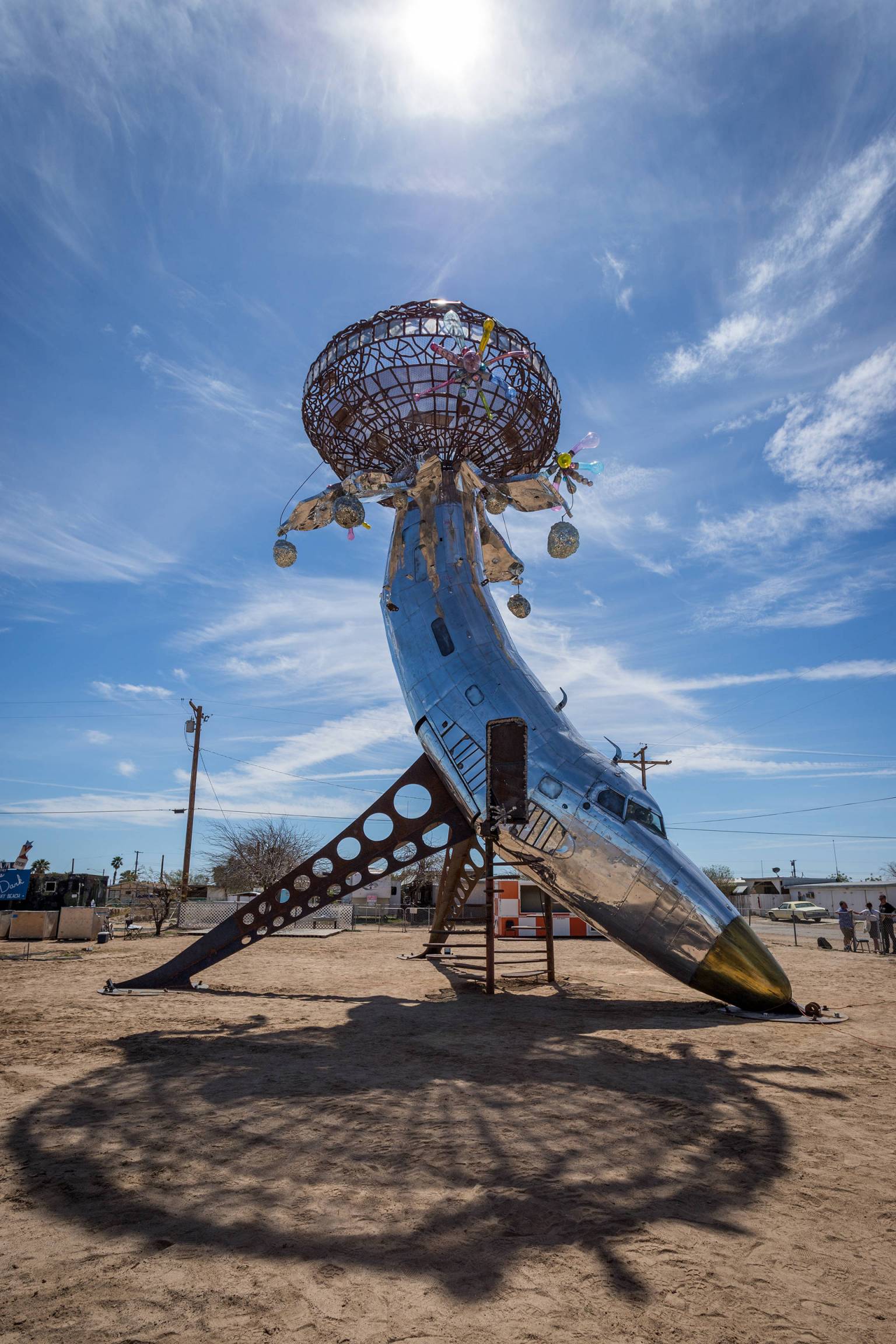
Together, in April 2016, they launched what they call “year zero” of the Biennale. The event was modest. Ashkenazy called in artist Greg Haberny to create an installation out of one of the few properties he owned at the time. Haberny was urged to purchase a junk plane and stage some sort of crash, but the artist—a former soap star who had gone from the set of One Life to Live to a life of struggle and joy making art in New York and Baltimore—opted to rebuild.
“I didn’t want to add more carnage to the landscape,” Haberny says. In his hands, the building, which was filled with nesting birds, fist-sized spiders and scorpions when he arrived became Foundation Foundation, Bombay Beach’s first art museum, which now hosts residencies for a rotating roster of artists.
In 2017, more properties were purchased and transformed, and White recruited legendary street artist Kenny Scharf, a contemporary of Keith Haring and Jean-Michel Basquiat. To create his installation, Scharf piled the roof of a crumbling home with plastic toys and junk he’d collected from the streets of L.A. and swirled the walls and windows with his signature fluorescent monsters.

But Ruspoli and company weren’t the first artists to set up shop here: Predating the festival by three years is the Bombay Beach Arts & Culture Center, run by Dave Day, who has owned property and lived at least part-time in the town for the past 22 years. An artist in his own right, Day, who lost his fifteen-year-old son to cancer, has long been inspired by the Japanese ceramics process kintsugi, in which a broken pot is bonded with silver or gold. “In the process of being broken and then put back together,” he says, “it becomes something more.”
Under his watch, the center hosts Alcoholics Anonymous meetings and offers public showers and free breakfasts to impoverished residents. Day also collaborates with the newer art community. He puts up artists who spend part of the year working in town and generally serves as a bridge between both worlds. When I ask him if the art movement in Bombay Beach has helped the town, he pauses and smiles.
We could buy a house in Bombay Beach for the price of a used Jetta
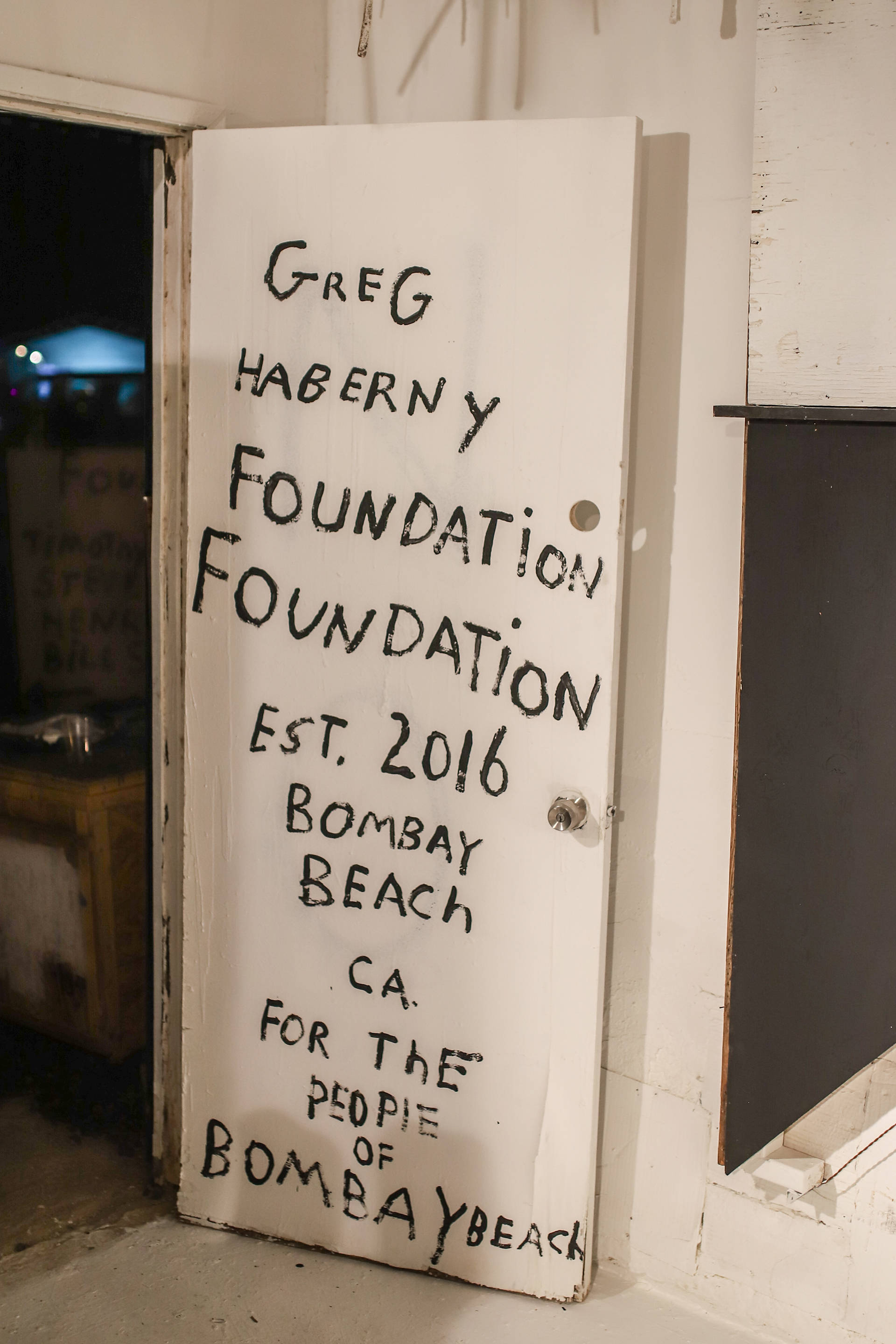
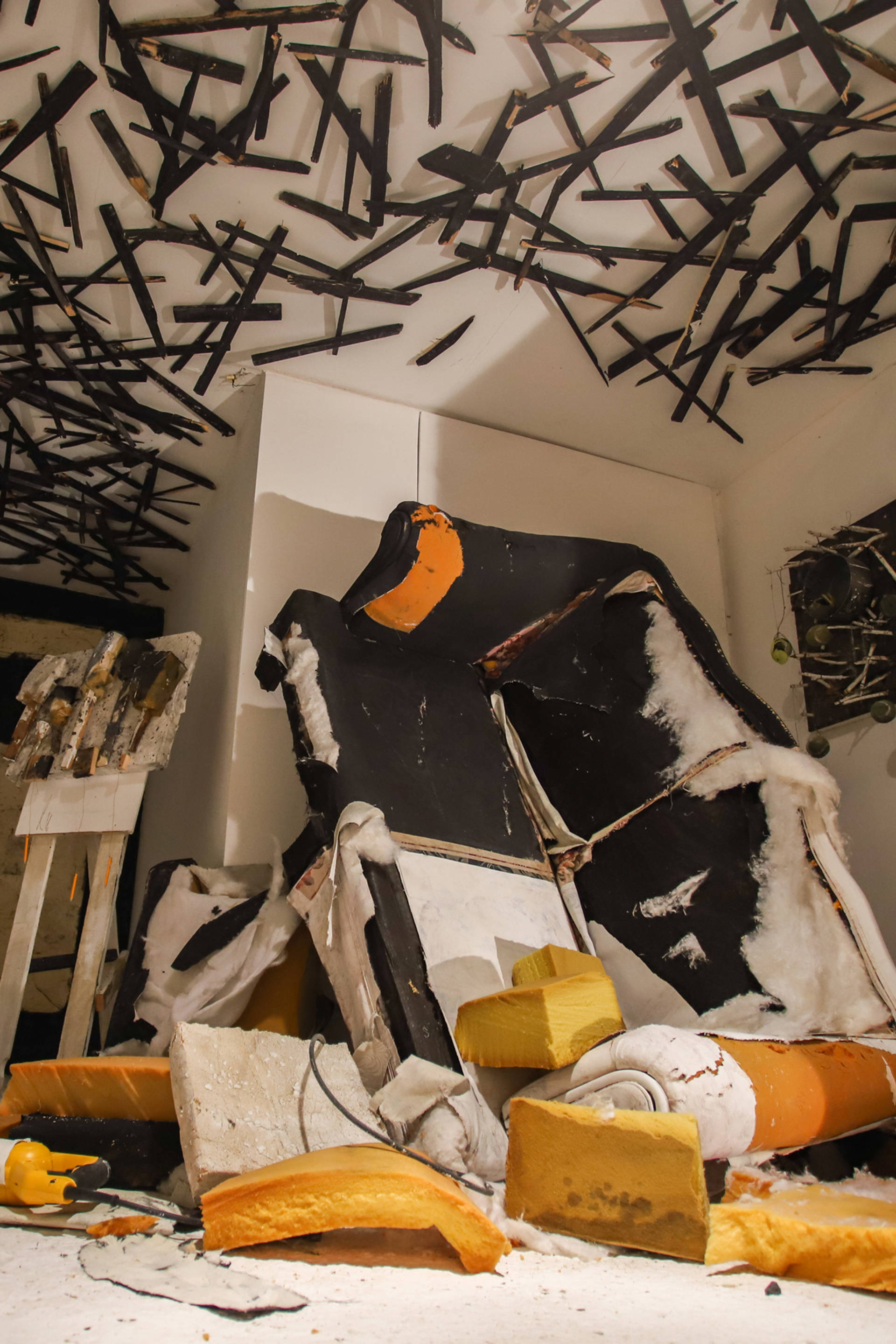
When the Biennale first launched, local opposition was widespread. According to Day, area retirees weren’t fond of the hedonistic displays that came with it—the scantily clad attendees, the all-night psychedelic dance parties.
“It could have been a good thing if they’d come into the town and been respectful to the people who live here,” says Gloria Town, a year-round resident and active community member. “But they feel entitled to do whatever they want.”
That sentiment has mellowed somewhat. “It’s probably 50-50 pro and con,” says James Andrews, another permanent resident. “I love it because it’s only a week or two out of the year, and it brings a little life to the beach. It definitely helps the local economy.”
Some locals and members of the artist community hang out socially, both during and beyond Biennale season. The latter often patronize the Ski Inn, the town’s sole watering hole, and several attend community board meetings.
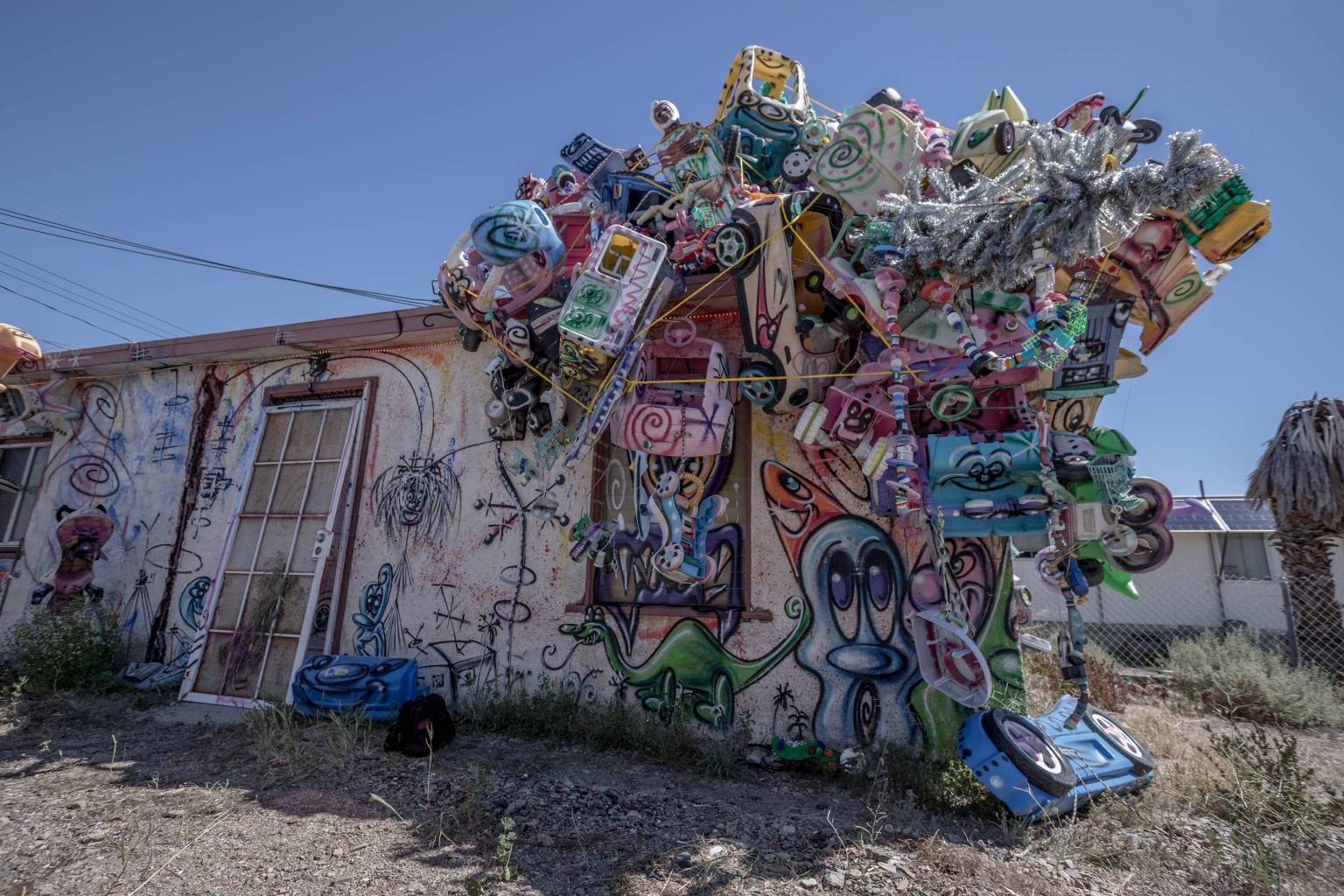
Nowhere are the potential implications of growth more acutely rendered than in an installation by an artist known as Jae Fella, who created signs for Sotheby’s International Reality [sic] and placed them on several properties in town. He also built a fake real estate office, which doubles as his art gallery, the Bombay Pickle. In its front window, he posted listings for multimillion-dollar properties that had been worth just $500 two years earlier. Fella came up as a street artist in Brighton, England. He remembers when he and his crew were run out thanks to rising rents. The same thing happened in once derelict East London where he moved next. His installation, the sheer number of confused real estate inquiries he receives all weekend, and the fact that some property values have risen to more than $30,000 suggests life is already imitating art. Ashkenazy plans to open a hotel in town called the Last Resort. If Bombay Beach gentrifies further, where will that leave its current residents?
“If I were to have a personal goal, it would be to see artists, who were never able to afford real estate, move here, reside and create, live and die,” Day says. “If it gets to where the people with the most money buy the most lots all at once and build big campuses, then it makes it a little more challenging.”
Among the 500 or so people who have flocked to this year’s Biennale, those questions are for another time.
The event peaks on Saturday night, unfurling like a choose-your-own art adventure. A marching band and two stilted dancers dressed like a bride and groom on their way to a funeral lead a sunset parade. A packed bandstand of blissed-out bohemians enjoy a stunning ballet performance at the Opera House, and a line of people wait to glimpse Haberny’s abstract paintings and wood collages—their own form of kintsugi—at Foundation. To create the pieces, he bought back his previously sold work, chopped up the canvases, burned them to ash and used it as paint.
At the Ghost Drive-in I warm my hands by a campfire smoldering in the hood of a decomposing El Camino and watch French cinema on the ribbed white flank of a boxed truck. There are no subtitles so I wander over to an atheist church built by a once homeless, retired social worker and first time artist, Dadaonysus, who bolted three storage containers together to form a sanctuary in which to worship scientists and skeptics from Copernicus to Stephen Hawking.
I float past photographer Kathy Suder’s ghost tent village billowing in the wind, and pause to enjoy a performance from Vera Sola, a bluesy folk singer songwriter, (and the daughter of Dan Aykroyd), who jams with her band in the frame of a pane-less window.
I roam the galleries, get down on my knees to look a triceratops in the eye and stand tall to measure myself against amethyst boulders cracked wide open.
I roam the galleries, get down on my knees to look a triceratops in the eye and stand tall to measure myself against amethyst boulders cracked wide open. I mingle and dance among revelers in colorful galleries festooned with toilet bowl brushes.
All of it is mind-bending and I can’t help but give into the fantasy—the founding premise of this bizarre and exquisite dreamscape—that perhaps art is the great antidote after all—not just for this town, but for what ails people everywhere. We may not live by a toxic lake, but we consume way too much plastic and industrial food. Our trash is collected for us, but it piles up somewhere. The gears of our existence run smoothly and feel antiseptic, but nothing is. We’re deluged with advertising and curated content to the point of anxious distraction. Art, on the other hand, exists only in a specific time and space. It’s three dimensional and real, fashioned from raw or found materials and creative force. And when it’s exhibited in a place like Bombay Beach, where poverty and beauty, desecration and promise collide, that art, and the charge it delivers, is elevated.
At sunrise, French-Iranian opera singer Ariana Vafadari performs on the beach with a small band for the night’s survivors. They wear angel wings or faux fur or are dressed like desert gypsies. Colorful smoke grenades are set off behind the virtuoso mezzo-soprano, as she sings her Zoroastrian songs of lament and praise. The sky blushes pink. There is beauty and there is reverence.
Bombay Beach has become a wonderland.


